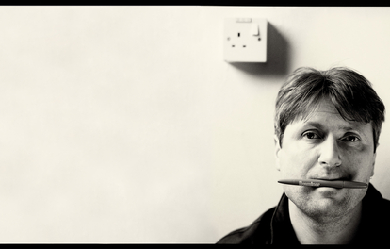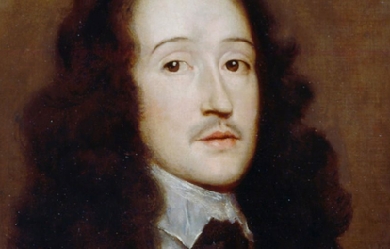
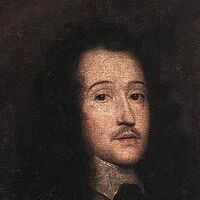
Richard Lovelace (1618–1657) was an English poet in the seventeenth century. He was a cavalier poet who fought on behalf of the king during the Civil war. His best known works are To Althea, from Prison, and To Lucasta, Going to the Warres. Early life and family Richard Lovelace was born in 1618. His exact birthplace is unknown, but it is documented that it was either Woolwich, Kent, or Holland. He was the oldest son of Sir William Lovelace and Anne Barne Lovelace and had four brothers and three sisters. His father was from an old distinguished military and legal family and the Lovelace family owned a considerable amount of property in Kent. His father, Sir William Lovelace, knt., was a member of the Virginia Company and an incorporator in the second Virginia Company in 1609. He was a soldier and he died during the war with Spain and Holland in the siege of Grol, a few days before the town fell. Richard was only 9 years old when his father died. Richard's father was the son of Sir William Lovelace and Elizabeth Aucher who was the daughter of Mabel Wroths and Edward Aucher, Esq. who inherited, under his father's Will, the manors of Bishopsbourne and Hautsborne. Elizabeth's nephew was Sir Anthony Aucher (1614 – 31 May 1692) an English politician and Cavalier during the English Civil War. He was the son of her brother Sir Anthony Aucher and his wife Hester Collett. Richard Lovelace's mother, Anne Barne (1587–1633), was the daughter of Sir William Barne and the granddaughter of Sir George Barne III (1532- d. 1593), the Lord Mayor of London and a prominent merchant and public official from London during the reign of Elizabeth I; and Anne Gerrard, daughter of Sir William Garrard, who was Lord Mayor of London in 1555. Richard Lovelace's mother was also the daughter of Anne Sandys and the granddaughter of Cicely Wilford and the Most Reverend Dr. Edwin Sandys, an Anglican church leader who successively held the posts of the Bishop of Worcester (1559–1570), Bishop of London (1570–1576), and the Archbishop of York (1576–1588). He was one of the translators of the Bishops' Bible. Anne Barne Lovelace married as her second husband, on 20 January 1630, at Greenwich, England, the Very Rev. Dr. Jonathan Browne They were the parents of one child, Anne Browne, who married Herbert Crofte, S.T.P. and D.D and were the parents of Sir Herbert Croft, 1st Baronet. His brother, Francis Lovelace (1621–1675), was the second governor of the New York colony appointed by the Duke of York, later King James II of England. He was also the great nephew of both George Sandys (2 March 1577 – March 1644), an English traveller, colonist and poet; and of Sir Edwin Sandys (9 December 1561 – October 1629), an English statesman and one of the founders of the London Company. In 1629, when Lovelace was eleven, he went to Sutton’s Foundation at Charterhouse School, then located in London. However, there is not a clear record that Lovelace actually attended because it is believed that he studied as a “boarder” because he did not need financial assistance like the “scholars”. He spent five years at Charterhouse, three of which were spent with Richard Crashaw, who also became a poet. On 5 May 1631, Lovelace was sworn in as a “Gentleman Wayter Extraordinary” to the King. This was an “honorary position for which one paid a fee”. He then went on to Gloucester Hall, Oxford, in 1634. Collegiate career Richard Lovelace attended Oxford University and he was praised by one of his contemporaries, Anthony Wood. for being “the most amiable and beautiful person that ever eye beheld; a person also of innate modesty, virtue and courtly deportment, which made him then, but especially after, when he retired to the great city, much admired and adored by the female sex" At the age of eighteen, during a three-week celebration at Oxford, he was granted the degree of Master of Arts. While at school, he tried to portray himself more as a social connoisseur rather than a scholar, continuing his image of being a Cavalier. Being a Cavalier poet, Lovelace wrote to praise a friend or fellow poet, to give advice in grief or love, to define a relationship, to articulate the precise amount of attention a man owes a woman, to celebrate beauty, and to persuade to love. Lovelace wrote a comedy, 'The Scholars,' and a tragedy titled 'The Soldiers,' while at Oxford. He then left for Cambridge University for a few months where he met Lord Goring, who led him into political trouble. Politics and prison Lovelace’s poetry was often influenced by his experiences with politics and association with important figures of his time. At the age of thirteen, Lovelace became a "Gentlemen Wayter Extraordinary" to the King and at nineteen he contributed a verse to a volume of elegies commemorating Princess Katharine. In 1639 Lovelace joined the regiment of Lord Goring, serving first as a senior ensign and later as a captain in the Bishops’ Wars. This experience inspired the 'Sonnet. To Generall Goring.' Upon his return to his home in Kent in 1640, Lovelace served as a country gentleman and a justice of the peace where he encountered firsthand the civil turmoil regarding religion and politics. In 1641 Lovelace led a group of men to seize and destroy a petition for the abolition of Episcopal rule, which had been signed by fifteen thousand people. The following year he presented the House of Commons with Dering’s pro-Royalist petition which was supposed to have been burned. These actions resulted in Lovelace’s first imprisonment. Shortly thereafter, he was released on bail with the stipulation that he avoid communication with the House of Commons without permission. This prevented Lovelace, who had done everything to prove himself during the Bishops’ Wars, from participating in the first phase of the English Civil War. However, this first experience of imprisonment did result in some good, as it brought him to write one of his finest and most beloved lyrics, 'To Althea, from Prison,' in which he illustrates his noble and paradoxical nature. Lovelace did everything he could to remain in the king’s favor despite his inability to participate in the war. Richard Lovelace did his part again during the political chaos of 1648, though it is unclear specifically what his actions were. He did, however, manage to warrant himself another prison sentence; this time for nearly a year. When he was released in April 1649, the king had been executed and Lovelace’s cause seemed lost. As in his previous incarceration, this experience led to creative production—this time in the form of spiritual freedom, as reflected in the release of his first volume of poetry, Lucasta. Literature Richard Lovelace first started writing while he was a student at Oxford and wrote almost 200 poems from that time until his death. His first work was a drama titled The Scholars. The play was never published; however, it was performed at college and then in London. In 1640, he wrote a tragedy titled 'The Soldier' which was based on his own military experience. When serving in the Bishops' Wars, he wrote the sonnet 'To Generall Goring,' which is a poem of Bacchanalian celebration rather than a glorification of military action. One of his extremely famous poems is 'To Lucasta, Going to the Warres,' written in 1640 and exposed in his first political action. During his first imprisonment in 1642, he wrote his most famous poem 'To Althea, From Prison.' Later on that year during his travels to Holland with General Goring, he wrote 'The Rose,' following with 'The Scrutiny' and on 14 May 1649, 'Lucasta' was published. He also wrote poems analyzing the details of many simple insects. 'The Ant,' 'The Grasse-hopper,' 'The Snayl,' 'The Falcon,' 'The Toad and Spyder.' Of these poems, 'The Grasse-hopper' is his most well-known. In 1660, after Lovelace died, "Lucasta: Postume Poems" was published; it contains 'A Mock-Song,' which has a much darker tone than his previous works. William Winstanley, who praised much of Richard Lovelace's works, thought highly of him and compared him to an idol; "I can compare no Man so like this Colonel Lovelace as Sir Philip Sidney,” of which it is in an Epitaph made of him; Nor is it fit that more I should aquaint Lest Men adore in one A Scholar, Souldier, Lover, and a Saint His most quoted excerpts are from the beginning of the last stanza of To Althea, From Prison: Stone walls do not a prison make, Nor iron bars a cage; Minds innocent and quiet take That for an hermitage and the end of To Lucasta. Going to the Warres: I could not love thee, dear, so much, Lov'd I not Honour more. Chronology 1618- Richard Lovelace born, either in Woolwich, Kent, or in Holland. 1629- King Charles I nominated “Thomas [probably Richard] Lovelace,” upon petition of Lovelace’s mother, Anne Barne Lovelace, to Sutton’s foundation at Charterhouse. 1631- On 5 May, Lovelace is made “Gentleman Wayter Extraordinary” to the King. 1634- On 27 June, he matriculates as Gentleman Commoner at Gloucester Hall, Oxford. 1635- Writes a comedy, The Scholars. 1636- On 31 August, the degree of M.A. is presented to him. 1637- On 4 October, he enters Cambridge University. 1638-1639- His first printed poems appear: ‘An Elegy” on Princess Katherine; prefaces to several books. 1639- He is senior ensign in General Goring’s regiment - in the First Scottish Expedition. “Sonnet to Goring.” 1640- Commissioned captain in the Second Scottish Expedition; writes a tragedy, The Soldier. He then returns home at 21, into the possession of his family’s property. 1641- Lovelace tears up a pro-Parliament, anti-Episcopacy petition at a meeting in Maidstone, Kent. 1642- 30 April, he presents the anti-Parliamentary Petition of Kent and is imprisoned at Gatehouse. After appealing, he is released on bail, 21 June. The Civil war begins on 22 August, he writes “To Althea, from Prison,” “To Lucasta.” In September, he goes to Holland with General Goring. He writes “The Rose.” 1642-1646-Probably serves in Holland and France with General Goring. He writes “The Scrutiny.” 1643- Sells some of his property to Richard Hulse. 1646- In October, he is wounded at Dunkirk, while fighting under the Great Conde against the Spaniards. 1647- He is admitted to the Freedom at the Painters’ Company. 1648-On 4 February, Lucasta is licensed at the Stationer’s Register. On 9 June, Lovelace is again imprisoned at Peterhouse. 1649- On 9 April, he is released from jail. He then sells the remaining family property and portraits to Richard Hulse. On 14 May, Lucasta is published. 1650-1657- Lovelace’s whereabouts unknown, though various poems are written. 1657- Lovelace dies. 1659-1660- Lucasta, Postume Poems is published. References Wikipedia - http://en.wikipedia.org/wiki/Richard_Lovelace
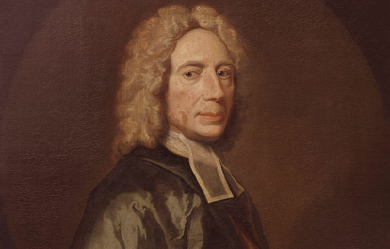
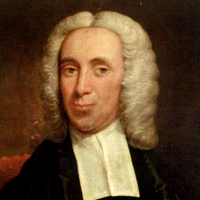
Isaac Watts (17 July 1674– 25 November 1748) was an English Christian minister, hymnwriter, theologian and logician. A prolific and popular hymn writer, his work was part of evangelization. He was recognized as the “Father of English Hymnody”, credited with some 750 hymns. Many of his hymns remain in use today and have been translated into numerous languages.
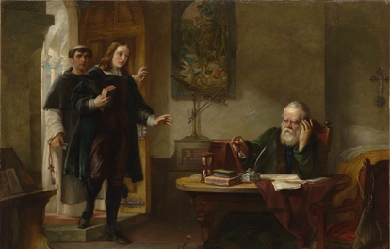
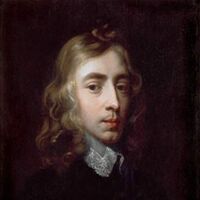
John Milton (9 December 1608 – 8 November 1674) was an English poet, polemicist, a scholarly man of letters, and a civil servant for the Commonwealth (republic) of England under Oliver Cromwell. He wrote at a time of religious flux and political upheaval, and is best known for his epic poem Paradise Lost. Milton's poetry and prose reflect deep personal convictions, a passion for freedom and self determination, and the urgent issues and political turbulence of his day. Writing in English, Latin, and Italian, he achieved international renown within his lifetime, and his celebrated Areopagitica, (written in condemnation of pre-publication censorship) is among history’s most influential and impassioned defenses of free speech and freedom of the press.
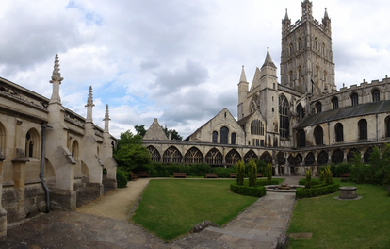
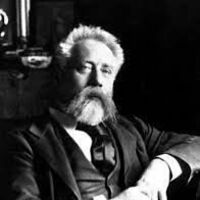
William Ernest Henley (23 August 1849 – 11 July 1903) was an English poet, critic and editor, best remembered for his 1875 poem “Invictus”. Henley was born in Gloucester and was the oldest of a family of six children, five sons and a daughter. His father, William, a bookseller and stationer, died in 1868 and was survived by young children and creditors. His mother, Mary Morgan, was descended from the poet and critic Joseph Wharton. Between 1861 and 1867, Henley was a pupil at the Crypt Grammar School (founded 1539).
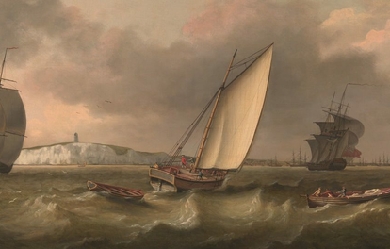
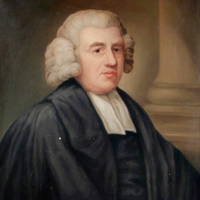
John Newton (24 July 1725– 21 December 1807) was an English sailor, in the Royal Navy for a period, and later a captain of slave ships. He became ordained as an evangelical Anglican cleric, served Olney, Buckinghamshire for two decades, and also wrote hymns, known for “Amazing Grace” and “Glorious Things of Thee Are Spoken”. Newton started his career at sea at a young age, and worked on slave ships in the slave trade for several years. After experiencing a period of Christian conversion Newton eventually renounced his trade and became a prominent supporter of abolitionism, living to see Britain’s abolition of the African slave trade in 1807. Early life John Newton was born in Wapping, London, in 1725, the son of Elizabeth (née Scatliff) and John Newton Sr., a shipmaster in the Mediterranean service. Elizabeth was the only daughter of Simon Scatliff, an instrument maker from London (the marriage register records her maiden name as Seatcliffe). Elizabeth was brought up as a Nonconformist. She died of tuberculosis (then called consumption) in July 1732, about two weeks before John’s seventh birthday. Newton spent two years at boarding school before going to live in Aveley in Essex, the home of his father’s new wife. At age eleven he first went to sea with his father. Newton sailed six voyages before his father retired in 1742. At that time, Newton’s father made plans for him to work at a sugarcane plantation in Jamaica. Instead, Newton signed on with a merchant ship sailing to the Mediterranean Sea. Impressment into naval service In 1743, while going to visit friends, Newton was captured and pressed into the naval service by the Royal Navy. He became a midshipman aboard HMS Harwich. At one point Newton tried to desert and was punished in front of the crew of 350. Stripped to the waist and tied to the grating, he received a flogging of eight dozen lashes and was reduced to the rank of a common seaman. Following that disgrace and humiliation, Newton initially contemplated murdering the captain and committing suicide by throwing himself overboard. He recovered, both physically and mentally. Later, while Harwich was en route to India, he transferred to Pegasus, a slave ship bound for West Africa. The ship carried goods to Africa and traded them for slaves to be shipped to the colonies in the Caribbean and North America. Enslavement and rescue Newton did not get along with the crew of Pegasus. They left him in West Africa with Amos Clowe, a slave dealer. Clowe took Newton to the coast and gave him to his wife, Princess Peye of the Sherbro people. She abused and mistreated Newton equally as much as she did her other slaves. Newton later recounted this period as the time he was “once an infidel and libertine, a servant of slaves in West Africa.” Early in 1748 he was rescued by a sea captain who had been asked by Newton’s father to search for him, and returned to England on the merchant ship Greyhound, which was carrying beeswax and dyer’s wood, now referred to as camwood. Spiritual conversion During his 1748 voyage to England after his rescue, Newton had a spiritual conversion. The ship encountered a severe storm off the coast of County Donegal in Ulster, Ireland, and almost sank. Newton awoke in the middle of the night and, as the ship filled with water, called out to God. The cargo shifted and stopped up the hole, and the ship drifted to safety. Newton marked this experience as the beginning of his conversion to evangelical Christianity. He began to read the Bible and other religious literature. By the time he reached Britain, he had accepted the doctrines of evangelical Christianity. The date was 10 March 1748, an anniversary he marked for the rest of his life. From that point on, he avoided profanity, gambling, and drinking. Although he continued to work in the slave trade, he had gained sympathy for the slaves during his time in Africa. He later said that his true conversion did not happen until some time later: “I cannot consider myself to have been a believer in the full sense of the word, until a considerable time afterwards.” Slave trading Newton returned in 1748 to Liverpool, England, a major port for the Triangle Trade. Partly due to the influence of his father’s friend Joseph Manesty, he obtained a position as first mate aboard the slave ship Brownlow, bound for the West Indies via the coast of Guinea. While in west Africa (1748–49), Newton acknowledged the inadequacy of his spiritual life. He became ill with a fever and professed his full belief in Christ, asking God to take control of his destiny. He later said that this was the first time he felt totally at peace with God. Newton did not however immediately renounce working in the slave trade. After his return to England in 1750, he made three voyages as captain of the slave ships Duke of Argyle (1750) and African (1752–53 and 1753–54). After suffering a severe stroke in 1754, he gave up seafaring and slave-trading activities. But he continued to invest in Manesty’s slaving operations. Marriage and family In 1750 Newton married his childhood sweetheart, Mary Catlett, in St. Margaret’s Church, Rochester. Newton adopted his two orphaned nieces, Elizabeth and Eliza Catlett, children of one of his brothers-in-law and his wife. Newton’s niece Alys Newton later married Mehul, a prince from India. Anglican priest In 1755 Newton was appointed as tide surveyor (a tax collector) of the Port of Liverpool, again through the influence of Manesty. In his spare time, he studied Greek, Hebrew, and Syriac, preparing for serious religious study. He became well known as an evangelical lay minister. In 1757, he applied to be ordained as a priest in the Church of England, but it was more than seven years before he was eventually accepted. During this period, he also applied to the Methodists, Independents and Presbyterians. He mailed applications directly to the Bishops of Chester and Lincoln and the Archbishops of Canterbury and York. Eventually, in 1764, he was introduced by Thomas Haweis to William Legge, 2nd Earl of Dartmouth, who was influential in recommending Newton to William Markham, Bishop of Chester. Haweis suggested Newton for the living of Olney, Buckinghamshire. On 29 April 1764 Newton received deacon’s orders, and finally was ordained as a priest on 17 June. As curate of Olney, Newton was partly sponsored by John Thornton, a wealthy merchant and evangelical philanthropist. He supplemented Newton’s stipend of £60 a year with £200 a year “for hospitality and to help the poor”. Newton soon became well known for his pastoral care, as much as for his beliefs. His friendship with Dissenters and evangelical clergy led to his being respected by Anglicans and Nonconformists alike. He spent sixteen years at Olney. His preaching was so popular that the congregation added a gallery to the church to accommodate the many persons who flocked to hear him. Some five years later, in 1772, Thomas Scott took up the curacy of the neighbouring parishes of Stoke Goldington and Weston Underwood. Newton was instrumental in converting Scott from a cynical ‘career priest’ to a true believer, a conversion which Scott related in his spiritual autobiography The Force Of Truth (1779). Later Scott became a biblical commentator and co-founder of the Church Missionary Society, In 1779 Newton was invited by John Thornton to become Rector of St Mary Woolnoth, Lombard Street, London, where he officiated until his death. The church had been built by Nicholas Hawksmoor in 1727 in the fashionable Baroque style. Newton was one of only two evangelical Anglican priests in the capital, and he soon found himself gaining in popularity amongst the growing evangelical party. He was a strong supporter of evangelicalism in the Church of England. He remained a friend of Dissenters (such as Methodists and Baptists) as well as Anglicans. Young churchmen and people struggling with faith sought his advice, including such well-known social figures as the writer and philanthropist Hannah More, and the young William Wilberforce, a Member of Parliament who had recently suffered a crisis of conscience and religious conversion while contemplating leaving politics. The younger man consulted with Newton, who encouraged Wilberforce to stay in Parliament and “serve God where he was”. In 1792, Newton was presented with the degree of Doctor of Divinity by the College of New Jersey (now Princeton University). Abolitionist In 1788, 34 years after he had retired from the slave trade, Newton broke a long silence on the subject with the publication of a forceful pamphlet Thoughts Upon the Slave Trade, in which he described the horrific conditions of the slave ships during the Middle Passage. He apologized for “a confession, which... comes too late... It will always be a subject of humiliating reflection to me, that I was once an active instrument in a business at which my heart now shudders.” He had copies sent to every MP, and the pamphlet sold so well that it swiftly required reprinting. Newton became an ally of William Wilberforce, leader of the Parliamentary campaign to abolish the African slave trade. He lived to see the British passage of the Slave Trade Act 1807, which enacted this event. Some modern writers have criticised Newton for continuing to participate in the slave trade after his religious conversion, but Christianity did not deter thousands of slaveholders in the colonies from owning other men, nor many others from profiting by the slave trade. Newton came to believe that during the first five of his nine years as a slave trader he had not been a Christian in the full sense of the term. In 1763 he wrote: “I was greatly deficient in many respects... I cannot consider myself to have been a believer in the full sense of the word, until a considerable time afterwards.” Writer and hymnist In 1767 William Cowper, the poet, moved to Olney. He worshipped in Newton’s church, and collaborated with the priest on a volume of hymns; it was published as Olney Hymns in 1779. This work had a great influence on English hymnology. The volume included Newton’s well-known hymns: “Glorious Things of Thee Are Spoken,” “How Sweet the Name of Jesus Sounds!,” “Let Us Love, and Sing, and Wonder,” “Come, My Soul, Thy Suit Prepare,” “Approach, My Soul, the Mercy-seat”, and “Faith’s Review and Expectation,” which has come to be known by its opening phrase, “Amazing Grace”. Many of Newton’s (as well as Cowper’s) hymns are preserved in the Sacred Harp, a hymnal used in the American South during the Second Great Awakening. Hymns were scored according to the tonal scale for shape note singing. Easily learned and incorporating singers into four-part harmony, shape note music was widely used by evangelical preachers to reach new congregants. Newton also contributed to the Cheap Repository Tracts. He wrote an autobiography entitled An Authentic Narrative of Some Remarkable And Interesting Particulars in the Life of———Communicated, in a Series of Letters, to the Reverend T. Haweiss, which he published anonymously. It was later described as 'written in an easy style, distinguished by great natural shrewdness, and sanctified by the Lord God and prayer’. Final years Newton’s wife Mary Catlett died in 1790, after which he published Letters to a Wife (1793), in which he expressed his grief. Plagued by ill health and failing eyesight, Newton died on 21 December 1807 in London. He was buried beside his wife in St. Mary Woolnoth in London. Both were reinterred at the Church of St. Peter and Paul in Olney in 1893. Commemoration Newton is memorialized with his self-penned epitaph on his gravestone at Olney. When he was initially interred in London, a memorial plaque to Newton, containing his self-penned epitaph, was installed on the wall of St Mary Woolnoth. At the bottom of the plaque are the words: "The above Epitaph was written by the Deceased who directed it to be inscribed on a plain Marble Tablet. He died on December the 21st December 1807. Aged 82 Years, and his Mortal Remains are deposited in the Vault beneath the Church.” The town of Newton, Sierra Leone is named after him. To this day his former town of Olney provides philanthropy for the African town. In 1982, Newton was recognized for his influential hymns by the Gospel Music Association when he was inducted into the Gospel Music Hall of Fame. Portrayals in media Film The film Amazing Grace (2006) highlights Newton’s influence on William Wilberforce. Albert Finney portrays Newton, Ioan Gruffudd is Wilberforce, and the film was directed by Michael Apted. The film portrays Newton as a penitent haunted by the ghosts of 20,000 slaves. The Nigerian film The Amazing Grace (2006), the creation of Nigerian director/writer/producer Jeta Amata, provides an African perspective on the slave trade. Nigerian actors Joke Silva, Mbong Odungide, and Fred Amata (brother of the director) portray Africans who are captured and taken away from their homeland by slave traders. Newton is played by Nick Moran. The 2014 film Freedom tells the story of an American slave (Samuel Woodward, played by Cuba Gooding, Jr.) escaping to freedom via the Underground Railroad. A parallel earlier story depicts John Newton (played by Bernhard Forcher) as the captain of a slave ship bound for America carrying Samuel’s grandfather. Newton’s conversion is explored as well. Stage productions African Snow (2007), a play by Murray Watts, takes place in the mind of John Newton. It was first produced at the York Theatre Royal as a co-production with Riding Lights Theatre Company, transferring to the Trafalgar Studios in London’s West End and a National Tour. Newton was played by Roger Alborough and Olaudah Equiano by Israel Oyelumade. The musical Amazing Grace is a dramatisation of Newton’s life. The 2014 pre-Broadway and 2015 Broadway productions starred Josh Young as Newton. Television Newton is portrayed by actor John Castle in the British television miniseries, The Fight Against Slavery (1975). Novels Caryl Phillips’ novel, Crossing the River (1993), includes nearly verbatim excerpts of Newton’s logs from his Journal of a Slave Trader. References Wikipedia—https://en.wikipedia.org/wiki/John_Newton
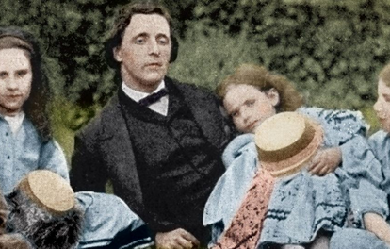
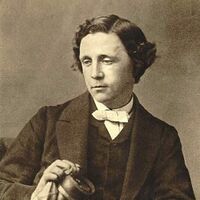
Charles Lutwidge Dodgson (27 January 1832 – 14 January 1898), better known by the pseudonym Lewis Carroll, was an English author, mathematician, logician, Anglican deacon and photographer. His most famous writings are Alice's Adventures in Wonderland and its sequel Through the Looking-Glass, as well as the poems "The Hunting of the Snark" and "Jabberwocky", all examples of the genre of literary nonsense. He is noted for his facility at word play, logic, and fantasy, and there are societies in many parts of the world (including the United Kingdom, Japan, the United States, and New Zealand) dedicated to the enjoyment and promotion of his works and the investigation of his life. Antecedents Dodgson's family was predominantly northern English, with Irish connections. Conservative and High Church Anglican, most of Dodgson's ancestors were army officers or Church of England clergy. His great-grandfather, also named Charles Dodgson, had risen through the ranks of the church to become the Bishop of Elphin. His grandfather, another Charles, had been an army captain, killed in action in Ireland in 1803 when his two sons were hardly more than babies. His mother's name was Frances Jane Lutwidge. The elder of these sons – yet another Charles Dodgson – was Carroll's father. He reverted to the other family tradition and took holy orders. He went to Westminster School, and then to Christ Church, Oxford. He was mathematically gifted and won a double first degree, which could have been the prelude to a brilliant academic career. Instead he married his first cousin in 1827 and became a country parson. Dodgson was born in the little parsonage of Daresbury in Cheshire near the towns of Warrington and Runcorn, the eldest boy but already the third child of the four-and-a-half-year-old marriage. Eight more children were to follow. When Charles was 11, his father was given the living of Croft-on-Tees in North Yorkshire, and the whole family moved to the spacious rectory. This remained their home for the next twenty-five years. Young Charles' father was an active and highly conservative cleric of the Church of England who later became the Archdeacon of Richmond and involved himself, sometimes influentially, in the intense religious disputes that were dividing the church. He was High Church, inclining to Anglo-Catholicism, an admirer of John Henry Newman and the Tractarian movement, and did his best to instill such views in his children. Young Charles was to develop an ambiguous relationship with his father's values and with the Church of England as a whole. Education Home life During his early youth, Dodgson was educated at home. His "reading lists" preserved in the family archives testify to a precocious intellect: at the age of seven the child was reading The Pilgrim's Progress. He also suffered from a stammer – a condition shared by most of his siblings – that often influenced his social life throughout his years. At age twelve he was sent to Richmond Grammar School (now part of Richmond School) at nearby Richmond. Rugby In 1846, young Dodgson moved on to Rugby School, where he was evidently less happy, for as he wrote some years after leaving the place: I cannot say ... that any earthly considerations would induce me to go through my three years again ... I can honestly say that if I could have been ... secure from annoyance at night, the hardships of the daily life would have been comparative trifles to bear. Scholastically, though, he excelled with apparent ease. "I have not had a more promising boy at his age since I came to Rugby", observed R.B. Mayor, then Mathematics master. Oxford He left Rugby at the end of 1849 and matriculated at Oxford in May 1850 as a member of his father's old college, Christ Church. After waiting for rooms in college to become available, he went into residence in January 1851. He had been at Oxford only two days when he received a summons home. His mother had died of "inflammation of the brain" – perhaps meningitis or a stroke – at the age of forty-seven. His early academic career veered between high promise and irresistible distraction. He did not always work hard, but was exceptionally gifted and achievement came easily to him. In 1852 he obtained first-class honours in Mathematics Moderations, and was shortly thereafter nominated to a Studentship by his father's old friend, Canon Edward Pusey. In 1854 he obtained first-class honours in the Final Honours School of Mathematics, graduating Bachelor of Arts. He remained at Christ Church studying and teaching, but the next year he failed an important scholarship through his self-confessed inability to apply himself to study. Even so, his talent as a mathematician won him the Christ Church Mathematical Lectureship in 1855, which he continued to hold for the next twenty-six years. Despite early unhappiness, Dodgson was to remain at Christ Church, in various capacities, until his death. Character and appearance Health challenges The young adult Charles Dodgson was about six feet tall, slender, and had curling brown hair and blue or grey eyes (depending on the account). He was described in later life as somewhat asymmetrical, and as carrying himself rather stiffly and awkwardly, though this may be on account of a knee injury sustained in middle age. As a very young child, he suffered a fever that left him deaf in one ear. At the age of seventeen, he suffered a severe attack of whooping cough, which was probably responsible for his chronically weak chest in later life. Another defect he carried into adulthood was what he referred to as his "hesitation", a stammer he acquired in early childhood and which plagued him throughout his life. The stammer has always been a potent part of the conceptions of Dodgson; it is part of the belief that he stammered only in adult company and was free and fluent with children, but there is no evidence to support this idea. Many children of his acquaintance remembered the stammer while many adults failed to notice it. Dodgson himself seems to have been far more acutely aware of it than most people he met; it is said he caricatured himself as the Dodo in Alice's Adventures in Wonderland, referring to his difficulty in pronouncing his last name, but this is one of the many "facts" often-repeated, for which no firsthand evidence remains. He did indeed refer to himself as the dodo, but that this was a reference to his stammer is simply speculation. Although Dodgson's stammer troubled him, it was never so debilitating that it prevented him from applying his other personal qualities to do well in society. At a time when people commonly devised their own amusements and when singing and recitation were required social skills, the young Dodgson was well-equipped to be an engaging entertainer. He reportedly could sing tolerably well and was not afraid to do so before an audience. He was adept at mimicry and storytelling, and was reputedly quite good at charades. Social connections In the interim between his early published writing and the success of the Alice books, Dodgson began to move in the Pre-Raphaelite social circle. He first met John Ruskin in 1857 and became friendly with him. He developed a close relationship with Dante Gabriel Rossetti and his family, and also knew William Holman Hunt, John Everett Millais, and Arthur Hughes, among other artists. He also knew the fairy-tale author George MacDonald well – it was the enthusiastic reception of Alice by the young MacDonald children that convinced him to submit the work for publication. Politics, religion and philosophy In broad terms, Dodgson has traditionally been regarded as politically, religiously, and personally conservative. Martin Gardner labels Dodgson as a Tory who was "awed by lords and inclined to be snobbish towards inferiors." The Revd W. Tuckwell, in his Reminiscences of Oxford (1900), regarded him as "austere, shy, precise, absorbed in mathematical reverie, watchfully tenacious of his dignity, stiffly conservative in political, theological, social theory, his life mapped out in squares like Alice's landscape." However, Dodgson also expressed interest in philosophies and religions that seem at odds with this assessment. For example, he was a founding member of the Society for Psychical Research. It has been argued by the proponents of the 'Carroll Myth' that these factors require a reconsideration of Gardner's diagnosis, and that perhaps, Dodgson's true outlook was more complex than previously believed (see 'the Carroll Myth' below). Dodgson wrote some studies of various philosophical arguments. In 1895, he developed a philosophical regressus-argument on deductive reasoning in his article "What the Tortoise Said to Achilles", which appeared in one of the early volumes of the philosophical journal Mind. The article was reprinted in the same journal a hundred years later, in 1995, with a subsequent article by Simon Blackburn titled Practical Tortoise Raising. Artistic activities Literature From a young age, Dodgson wrote poetry and short stories, both contributing heavily to the family magazine Mischmasch and later sending them to various magazines, enjoying moderate success. Between 1854 and 1856, his work appeared in the national publications, The Comic Times and The Train, as well as smaller magazines like the Whitby Gazette and the Oxford Critic. Most of this output was humorous, sometimes satirical, but his standards and ambitions were exacting. "I do not think I have yet written anything worthy of real publication (in which I do not include the Whitby Gazette or the Oxonian Advertiser), but I do not despair of doing so some day," he wrote in July 1855. Sometime after 1850, he did write puppet plays for his siblings' entertainment, of which one has survived, La Guida di Bragia. In 1856 he published his first piece of work under the name that would make him famous. A romantic poem called "Solitude" appeared in The Train under the authorship of "Lewis Carroll." This pseudonym was a play on his real name; Lewis was the anglicised form of Ludovicus, which was the Latin for Lutwidge, and Carroll an Irish surname similar to the Latin name Carolus, from which the name Charles comes. Alice In the same year, 1856, a new Dean, Henry Liddell, arrived at Christ Church, bringing with him his young family, all of whom would figure largely in Dodgson's life and, over the following years, greatly influence his writing career. Dodgson became close friends with Liddell's wife, Lorina, and their children, particularly the three sisters: Lorina, Edith and Alice Liddell. He was for many years widely assumed to have derived his own "Alice" from Alice Liddell. This was given some apparent substance by the fact the acrostic poem at the end of Through the Looking Glass spells out her name, and that there are many superficial references to her hidden in the text of both books. It has been pointed out that Dodgson himself repeatedly denied in later life that his "little heroine" was based on any real child, and frequently dedicated his works to girls of his acquaintance, adding their names in acrostic poems at the beginning of the text. Gertrude Chataway's name appears in this form at the beginning of The Hunting of the Snark, and no one has ever suggested this means any of the characters in the narrative are based on her. Though information is scarce (Dodgson's diaries for the years 1858–1862 are missing), it does seem clear that his friendship with the Liddell family was an important part of his life in the late 1850s, and he grew into the habit of taking the children (first the boy, Harry, and later the three girls) on rowing trips accompanied by an adult friend to nearby Nuneham Courtenay or Godstow. It was on one such expedition, on 4 July 1862, that Dodgson invented the outline of the story that eventually became his first and largest commercial success. Having told the story and been begged by Alice Liddell to write it down, Dodgson eventually (after much delay) presented her with a handwritten, illustrated manuscript entitled Alice's Adventures Under Ground in November 1864. Before this, the family of friend and mentor George MacDonald read Dodgson's incomplete manuscript, and the enthusiasm of the MacDonald children encouraged Dodgson to seek publication. In 1863, he had taken the unfinished manuscript to Macmillan the publisher, who liked it immediately. After the possible alternative titles Alice Among the Fairies and Alice's Golden Hour were rejected, the work was finally published as Alice's Adventures in Wonderland in 1865 under the Lewis Carroll pen-name, which Dodgson had first used some nine years earlier. The illustrations this time were by Sir John Tenniel; Dodgson evidently thought that a published book would need the skills of a professional artist. The overwhelming commercial success of the first Alice book changed Dodgson's life in many ways. The fame of his alter ego "Lewis Carroll" soon spread around the world. He was inundated with fan mail and with sometimes unwanted attention. Indeed, according to one popular story, Queen Victoria herself enjoyed Alice In Wonderland so much that she suggested he dedicate his next book to her, and was accordingly presented with his next work, a scholarly mathematical volume entitled An Elementary Treatise on Determinants. Dodgson himself vehemently denied this story, commenting "...It is utterly false in every particular: nothing even resembling it has occurred"; and it is unlikely for other reasons: as T.B. Strong comments in a Times article, "It would have been clean contrary to all his practice to identify [the] author of Alice with the author of his mathematical works". He also began earning quite substantial sums of money but continued with his seemingly disliked post at Christ Church. Late in 1871, a sequel – Through the Looking-Glass and What Alice Found There – was published. (The title page of the first edition erroneously gives "1872" as the date of publication.) Its somewhat darker mood possibly reflects the changes in Dodgson's life. His father had recently died (1868), plunging him into a depression that lasted some years. The Hunting of the Snark In 1876, Dodgson produced his last great work, The Hunting of the Snark, a fantastical "nonsense" poem, exploring the adventures of a bizarre crew of tradesmen, and one beaver, who set off to find the eponymous creature. The painter Dante Gabriel Rossetti reputedly became convinced the poem was about him. Photography In 1856, Dodgson took up the new art form of photography, first under the influence of his uncle Skeffington Lutwidge, and later his Oxford friend Reginald Southey. He soon excelled at the art and became a well-known gentleman-photographer, and he seems even to have toyed with the idea of making a living out of it in his very early years. A recent study by Roger Taylor and Edward Wakeling exhaustively lists every surviving print, and Taylor calculates that just over fifty percent of his surviving work depicts young girls, though this may be a highly distorted figure as approximately 60% of his original photographic portfolio is now missing, so any firm conclusions are difficult. Dodgson also made many studies of men, women, male children and landscapes; his subjects also include skeletons, dolls, dogs, statues and paintings, and trees. His pictures of children were taken with a parent in attendance and many of the pictures were taken in the Liddell garden, because natural sunlight was required for good exposures. He also found photography to be a useful entrée into higher social circles. During the most productive part of his career, he made portraits of notable sitters such as John Everett Millais, Ellen Terry, Dante Gabriel Rossetti, Julia Margaret Cameron, Michael Faraday and Alfred, Lord Tennyson. Dodgson abruptly ceased photography in 1880. Over 24 years, he had completely mastered the medium, set up his own studio on the roof of Tom Quad, and created around 3, images. Fewer than 1, have survived time and deliberate destruction. He reported that he stopped taking photographs because keeping his studio working was difficult (he used the wet collodion process) and commercial photographers (who started using the dry plate process in the 1870s) took pictures more quickly. With the advent of Modernism, tastes changed, and his photography was forgotten from around 1920 until the 1960s. Inventions To promote letter writing, Dodgson invented The Wonderland Postage-Stamp Case in 1889. This was a cloth-backed folder with twelve slots, two marked for inserting the then most commonly used penny stamp, and one each for the other current denominations to one shilling. The folder was then put into a slip case decorated with a picture of Alice on the front and the Cheshire Cat on the back. All could be conveniently carried in a pocket or purse. When issued it also included a copy of Carroll's pamphletted lecture, Eight or Nine Wise Words About Letter-Writing. Reconstructed nyctograph, with scale demonstrated by a 5 euro cent. Another invention is a writing tablet called the nyctograph for use at night that allowed for note-taking in the dark; thus eliminating the trouble of getting out of bed and striking a light when one wakes with an idea. The device consisted of a gridded card with sixteen squares and system of symbols representing an alphabet of Dodgson's design, using letter shapes similar to the Graffiti writing system on a Palm device. Among the games he devised outside of logic there are a number of word games, including an early version of what today is known as Scrabble. He also appears to have invented, or at least certainly popularised, the Word Ladder (or "doublet" as it was known at first); a form of brain-teaser that is still popular today: the game of changing one word into another by altering one letter at a time, each successive change always resulting in a genuine word. For instance, CAT is transformed into DOG by the following steps: CAT, COT, DOT, DOG. Other items include a rule for finding the day of the week for any date; a means for justifying right margins on a typewriter; a steering device for a velociam (a type of tricycle); new systems of parliamentary representation; more nearly fair elimination rules for tennis tournaments; a new sort of postal money order; rules for reckoning postage; rules for a win in betting; rules for dividing a number by various divisors; a cardboard scale for the college common room he worked in later in life, which, held next to a glass, ensured the right amount of liqueur for the price paid; a double-sided adhesive strip for things like the fastening of envelopes or mounting things in books; a device for helping a bedridden invalid to read from a book placed sideways; and at least two ciphers for cryptography. Mathematical work Within the academic discipline of mathematics, Dodgson worked primarily in the fields of geometry, matrix algebra, mathematical logic and recreational mathematics, producing nearly a dozen books under his real name. Dodgson also developed new ideas in the study of elections (e.g., Dodgson's method) and committees; some of this work was not published until well after his death. He worked as a mathematics tutor at Oxford, an occupation that gave him some financial security. Later years Over the remaining twenty years of his life, throughout his growing wealth and fame, his existence remained little changed. He continued to teach at Christ Church until 1881, and remained in residence there until his death. His last novel, the two-volume Sylvie and Bruno, was published in 1889 and 1893 respectively. It achieved nowhere near the success of the Alice books. Its intricacy was apparently not appreciated by contemporary readers. The reviews and its sales, only 13, copies, were disappointing. The only occasion on which (as far as is known) he travelled abroad was a trip to Russia in 1867 as an ecclesiastical together with the Reverend Henry Liddon. He recounts the travel in his "Russian Journal", which was first commercially published in 1935. On his way to Russia and back Lewis Carroll also saw different cities in Belgium, Germany, the partitioned Poland, and France. He died on 14 January 1898 at his sisters' home, "The Chestnuts" in Guildford, of pneumonia following influenza. He was two weeks away from turning 66 years old. He is buried in Guildford at the Mount Cemetery. Controversies and mysteries "Carroll Myth” Since 1999 a group of scholars, notably Karoline Leach, Hugues Lebailly and Sherry L. Ackerman, John Tufail, Douglas Nickel and others, argue that what Leach terms the "Carroll Myth" has wildly distorted biographical perception of his life and his work. Leach's book, In the Shadow of the Dreamchild, raised a considerable amount of controversy. In brief the claim is that: * In general terms Dodgson's life has been simplified and 'infantilised' by a combination of inaccurate biography and the longstanding unavailability of key evidence, which allowed legends to proliferate unchecked. * By the time the evidence did become available the 'mythic' image of the man had become so embedded in scholastic and popular thinking it remained unquestioned, despite the fact the evidence failed to support it. * If the evidence is examined dispassionately it shows many of the most famous legends about the man (e.g. his 'paedophilia', and his exclusive adoration of small girls) are untrue, or at least grossly simplified. In more detail, Lebailly has endeavoured to set Dodgson's child-photography within the "Victorian Child Cult", which perceived child-nudity as essentially an expression of innocence. Lebailly claims that studies of child nudes were mainstream and fashionable in Dodgson's time and that most photographers, including Oscar Gustave Rejlander and Julia Margaret Cameron, made them as a matter of course. Lebailly continues that child nudes even appeared on Victorian Christmas cards, implying a very different social and aesthetic assessment of such material. Lebailly concludes that it has been an error of Dodgson's biographers to view his child-photography with 20th or 21st century eyes, and to have presented it as some form of personal idiosyncrasy, when it was in fact a response to a prevalent aesthetic and philosophical movement of the time. Leach's reappraisal of Dodgson focused in particular on his controversial sexuality. She argues that the allegations of paedophilia rose initially from a misunderstanding of Victorian morals, as well as the mistaken idea, fostered by Dodgson's various biographers, that he had no interest in adult women. She termed the traditional image of Dodgson "the Carroll Myth". She drew attention to the large amounts of evidence in his diaries and letters that he was also keenly interested in adult women, married and single, and enjoyed several scandalous (by the social standards of his time) relationships with them. She also pointed to the fact that many of those he described as "child-friends" were girls in their late teens and even twenties. She argues that suggestions of paedophilia evolved only many years after his death, when his well-meaning family had suppressed all evidence of his relationships with women in an effort to preserve his reputation, thus giving a false impression of a man interested only in little girls. Similarly, Leach traces the claim that many of Carroll's female friendships ended when the girls reached the age of 14 to a 1932 biography by Langford Reed. The concept of the Carroll Myth has produced polarised reactions from Carroll scholars. In 2004 Contrariwise, the Association for new Lewis Carroll studies. was established, and those such as Carolyn Sigler and Cristopher Hollingsworth have joined the ranks of those calling for a major reassessment. But the concept of the Myth has been opposed by some leading Carroll scholars, in particular Morton N. Cohen and Martin Gardner (their comments, and those of more positive reviewers, can be found on Karoline Leach's own page). Biographer Jenny Woolf, while agreeing that Carroll's image has been comprehensively misrepresented in the past, believes that this can be attributed partly to Carroll's own behaviour and in particular his tendency to self-caricature in later life. Ordination Dodgson had been groomed for the ordained ministry in the Anglican Church from a very early age and was expected, as a condition of his residency at Christ Church, to take holy orders within four years of obtaining his master's degree. He delayed the process for some time but eventually took deacon's orders on 22 December 1861. But when the time came a year later to progress to priestly orders, Dodgson appealed to the dean for permission not to proceed. This was against college rules and initially Dean Liddell told him he would have to consult the college ruling body, which would almost undoubtedly have resulted in his being expelled. For unknown reasons, Dean Liddell changed his mind overnight and permitted Dodgson to remain at the college in defiance of the rules. Uniquely amongst senior students of his time Dodgson never became a priest. There is currently no conclusive evidence about why Dodgson rejected the priesthood. Some have suggested his stammer made him reluctant to take the step, because he was afraid of having to preach. Wilson quotes letters by Dodgson describing difficulty in reading lessons and prayers rather than preaching in his own words. But Dodgson did indeed preach in later life, even though not in priest's orders, so it seems unlikely his impediment was a major factor affecting his choice. Wilson also points out that the then Bishop of Oxford, Samuel Wilberforce, who ordained Dodgson, had strong views against clergy going to the theatre, one of Dodgson's great interests. Others have suggested that he was having serious doubts about Anglicanism. He was interested in minority forms of Christianity (he was an admirer of F.D. Maurice) and "alternative" religions (theosophy). Dodgson became deeply troubled by an unexplained sense of sin and guilt at this time (the early 1860s) and frequently expressed the view in his diaries that he was a "vile and worthless" sinner, unworthy of the priesthood, and this sense of sin and unworthiness may well have affected his decision to abandon being ordained to the priesthood. Missing diaries At least four complete volumes and around seven pages of text are missing from Dodgson's 13 diaries. The loss of the volumes remains unexplained; the pages have been deliberately removed by an unknown hand. Most scholars assume the diary material was removed by family members in the interests of preserving the family name, but this has not been proven. Except for one page, the period of his diaries from which material is missing is between 1853 and 1863 (when Dodgson was 21–31 years old). This was a period when Dodgson began suffering great mental and spiritual anguish and confessing to an overwhelming sense of his own sin. This was also the period of time when he composed his extensive love poetry, leading to speculation that the poems may have been autobiographical. Many theories have been put forward to explain the missing material. A popular explanation for one particular missing page (27 June 1863) is that it might have been torn out to conceal a proposal of marriage on that day by Dodgson to the 11-year-old Alice Liddell; there has never been any evidence to suggest this was so, and a paper discovered by Karoline Leach in the Dodgson family archive in 1996 offers some evidence to the contrary. This paper, known as the "cut pages in diary document", was compiled by various members of Carroll's family after his death. Part of it may have been written at the time the pages were destroyed, though this is unclear. The document offers a brief summary of two diary pages that are now missing, including the one for 27 June 1863. The summary for this page states that Mrs. Liddell told Dodgson there was gossip circulating about him and the Liddell family's governess, as well as about his relationship with "Ina", presumably Alice's older sister, Lorina Liddell. The "break" with the Liddell family that occurred soon after was presumably in response to this gossip. An alternative interpretation has been made regarding Carroll's rumoured involvement with "Ina": Lorina was also the name of Alice Liddell's mother. What is deemed most crucial and surprising is that the document seems to imply Dodgson's break with the family was not connected with Alice at all. Until a primary source is discovered, the events of 27 June 1863 remain inconclusive. Migraine and epilepsy In his diary for 1880, Dodgson recorded experiencing his first episode of migraine with aura, describing very accurately the process of 'moving fortifications' that are a manifestation of the aura stage of the syndrome. Unfortunately there is no clear evidence to show whether this was his first experience of migraine per se, or if he may have previously suffered the far more common form of migraine without aura, although the latter seems most likely, given the fact that migraine most commonly develops in the teens or early adulthood. Another form of migraine aura, Alice in Wonderland Syndrome, has been named after Dodgson's little heroine, because its manifestation can resemble the sudden size-changes in the book. Also known as micropsia and macropsia, it is a brain condition affecting the way objects are perceived by the mind. For example, an afflicted person may look at a larger object, like a basketball, and perceive it as if it were the size of a golf ball. Some authors have suggested that Dodgson may have suffered from this type of aura, and used it as an inspiration in his work, but there is no evidence that he did. Dodgson also suffered two attacks in which he lost consciousness. He was diagnosed by three different doctors; a Dr. Morshead, Dr. Brooks, and Dr. Stedman, believed the attack and a consequent attack to be an "epileptiform" seizure (initially thought to be fainting, but Brooks changed his mind). Some have concluded from this he was a lifetime sufferer of this condition, but there is no evidence of this in his diaries beyond the diagnosis of the two attacks already mentioned. Some authors, in particular Sadi Ranson, have suggested Carroll may have suffered from temporal lobe epilepsy in which consciousness is not always completely lost, but altered, and in which the symptoms mimic many of the same experiences as Alice in Wonderland. Carroll had at least one incidence in which he suffered full loss of consciousness and awoke with a bloody nose, which he recorded in his diary and noted that the episode left him not feeling himself for "quite sometime afterward". This attack was diagnosed as possibly "epileptiform" and Carroll himself later wrote of his "seizures" in the same diary. Most of the standard diagnostic tests of today were not available in the nineteenth century. Recently, Dr Yvonne Hart, consultant neurologist at the Radcliffe Hospital, Oxford, considered Dodgson's symptoms. Her conclusion, quoted in Jenny Woolf's The Mystery of Lewis Carroll, is that Dodgson very likely had migraine, and may have had epilepsy, but she emphasises that she would have considerable doubt about making a diagnosis of epilepsy without further information. Suggestions of paedophilia Stuart Dodgson Collingwood (Dodgson's nephew and biographer) wrote: And now as to the secondary causes which attracted him to children. First, I think children appealed to him because he was pre-eminently a teacher, and he saw in their unspoiled minds the best material for him to work upon. In later years one of his favourite recreations was to lecture at schools on logic; he used to give personal attention to each of his pupils, and one can well imagine with what eager anticipation the children would have looked forward to the visits of a schoolmaster who knew how to make even the dullest subjects interesting and amusing. Despite comments like this, Dodgson's friendships with young girls and psychological readings of his work – especially his photographs of nude or semi-nude girls – have all led to speculation that he was a paedophile. This possibility has underpinned numerous modern interpretations of his life and work, particularly Dennis Potter's play Alice and his screenplay for the motion picture, Dreamchild, Robert Wilson's Alice, and a number of recent biographies, including Michael Bakewell's Lewis Carroll: A Biography (1996), Donald Thomas's Lewis Carroll: A Portrait with Background (1995), and Morton N. Cohen's Lewis Carroll: A Biography (1995). All of these works more or less unequivocally assume that Dodgson was a paedophile, albeit a repressed and celibate one. Cohen claims Dodgson's "sexual energies sought unconventional outlets", and further writes: We cannot know to what extent sexual urges lay behind Charles's preference for drawing and photographing children in the nude. He contended the preference was entirely aesthetic. But given his emotional attachment to children as well as his aesthetic appreciation of their forms, his assertion that his interest was strictly artistic is naïve. He probably felt more than he dared acknowledge, even to himself. Cohen notes that Dodgson "apparently convinced many of his friends that his attachment to the nude female child form was free of any eroticism", but adds that "later generations look beneath the surface" (p. 229). Cohen and other biographers argue that Dodgson may have wanted to marry the 11-year-old Alice Liddell, and that this was the cause of the unexplained "break" with the family in June 1863. There has never been significant evidence to support the idea, however, and the 1996 discovery of the "cut pages in diary document" (see above) seems to make it highly probable that the 1863 "break" had nothing to do with Alice, but was perhaps connected with rumours involving her older sister Lorina (born 11 May 1849, so she would have been 14 at the time), her governess, or her mother who was also nicknamed "Ina". Some writers, e.g., Derek Hudson and Roger Lancelyn Green, stop short of identifying Dodgson as a paedophile, but concur that he had a passion for small female children and next to no interest in the adult world. The basis for Dodgson's interest in female children has been challenged in the last ten years by several writers and scholars (see the 'Carroll Myth' above). Literary works * La Guida di Bragia, a Ballad Opera for the Marionette Theatre (around 1850) * A Tangled Tale * Alice's Adventures in Wonderland (1865) * Facts * Rhyme? And Reason? (also published as Phantasmagoria) * Pillow Problems * Sylvie and Bruno * Sylvie and Bruno Concluded * The Hunting of the Snark (1876) * Three Sunsets and Other Poems * Through the Looking-Glass, and What Alice Found There (includes "Jabberwocky" and "The Walrus and the Carpenter") (1871) * What the Tortoise Said to Achilles Mathematical works * A Syllabus of Plane Algebraic Geometry (1860) * The Fifth Book of Euclid Treated Algebraically (1858 and 1868) * An Elementary Treatise on Determinants, With Their Application to Simultaneous Linear Equations and Algebraic Equations * Euclid and his Modern Rivals (1879), both literary and mathematical in style * Symbolic Logic Part I * Symbolic Logic Part II (published posthumously) * The Alphabet Cipher (1868) * The Game of Logic * Some Popular Fallacies about Vivisection * Curiosa Mathematica I (1888) * Curiosa Mathematica II (1892) * The Theory of Committees and Elections, collected, edited, analysed, and published in 1958, by Duncan Black References Wikipedia - http://en.wikipedia.org/wiki/Lewis_Carroll
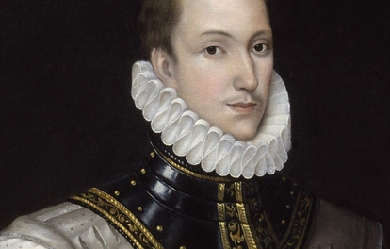
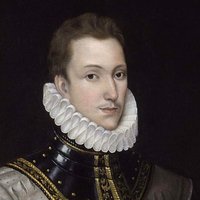
Sir Philip Sidney (30 November 1554– 17 October 1586) was an English poet, courtier, scholar, and soldier, who is remembered as one of the most prominent figures of the Elizabethan age. His works include Astrophel and Stella, The Defence of Poesy (also known as The Defence of Poetry or An Apology for Poetry), and The Countess of Pembroke’s Arcadia. Early life Born at Penshurst Place, Kent, he was the eldest son of Sir Henry Sidney and Lady Mary Dudley. His mother was the eldest daughter of John Dudley, 1st Duke of Northumberland, and the sister of Robert Dudley, 1st Earl of Leicester. His younger brother, Robert was a statesman and patron of the arts, and was created Earl of Leicester in 1618. His younger sister, Mary, married Henry Herbert, 2nd Earl of Pembroke and was a writer, translator and literary patron. Sidney dedicated his longest work, the Arcadia, to her. After her brother’s death, Mary reworked the Arcadia, which became known as The Countess of Pembroke’s Arcadia. Philip was educated at Shrewsbury School and Christ Church, Oxford. Politics and marriage In 1572, in which year he turned 18, he was elected to Parliament as Member of Parliament for Shrewsbury and in the same year travelled to France as part of the embassy to negotiate a marriage between Elizabeth I and the Duc D’Alençon. He spent the next several years in mainland Europe, moving through Germany, Italy, Poland, the Kingdom of Hungary and Austria. On these travels, he met a number of prominent European intellectuals and politicians. Returning to England in 1575, Sidney met Penelope Devereux, the future Lady Rich; though much younger, she would inspire his famous sonnet sequence of the 1580s, Astrophel and Stella. Her father, Walter Devereux, 1st Earl of Essex, is said to have planned to marry his daughter to Sidney, but he died in 1576. In England, Sidney occupied himself with politics and art. He defended his father’s administration of Ireland in a lengthy document. More seriously, he quarrelled with Edward de Vere, 17th Earl of Oxford, probably because of Sidney’s opposition to the French marriage, which de Vere championed. In the aftermath of this episode, Sidney challenged de Vere to a duel, which Elizabeth forbade. He then wrote a lengthy letter to the Queen detailing the foolishness of the French marriage. Characteristically, Elizabeth bristled at his presumption, and Sidney prudently retired from court. During a 1577 diplomatic visit to Prague, Sidney secretly visited the exiled Jesuit priest Edmund Campion. Sidney had returned to court by the middle of 1581 and in 1584 was MP for Kent. That same year Penelope Devereux was married, apparently against her will, to Lord Rich. Sidney was knighted in 1583. An early arrangement to marry Anne Cecil, daughter of Sir William Cecil and eventual wife of de Vere, had fallen through in 1571. In 1583, he married Frances, teenage daughter of Sir Francis Walsingham. In the same year, he made a visit to Oxford University with Giordano Bruno, who subsequently dedicated two books to Sidney. Literary writings His artistic contacts were more peaceful and more significant for his lasting fame. During his absence from court, he wrote Astrophel and Stella and the first draft of The Arcadia and The Defence of Poesy. Somewhat earlier, he had met Edmund Spenser, who dedicated The Shepheardes Calender to him. Other literary contacts included membership, along with his friends and fellow poets Fulke Greville, Edward Dyer, Edmund Spenser and Gabriel Harvey, of the (possibly fictitious) 'Areopagus’, a humanist endeavour to classicise English verse. Military activity Both through his family heritage and his personal experience (he was in Walsingham’s house in Paris during the St. Bartholomew’s Day Massacre), Sidney was a keenly militant Protestant. In the 1570s, he had persuaded John Casimir to consider proposals for a united Protestant effort against the Roman Catholic Church and Spain. In the early 1580s, he argued unsuccessfully for an assault on Spain itself. Promoted General of Horse in 1583, his enthusiasm for the Protestant struggle was given a free rein when he was appointed governor of Flushing in the Netherlands in 1585. In the Netherlands, he consistently urged boldness on his superior, his uncle the Earl of Leicester. He conducted a successful raid on Spanish forces near Axel in July, 1586. Injury and death Later that year, he joined Sir John Norris in the Battle of Zutphen, fighting for the Protestant cause against the Spanish. During the battle, he was shot in the thigh and died of gangrene 26 days later, at the age of 31. As he lay dying, Sidney composed a song to be sung by his deathbed. According to the story, while lying wounded he gave his water to another wounded soldier, saying, “Thy necessity is yet greater than mine”. This became possibly the most famous story about Sir Phillip, intended to illustrate his noble and gallant character. It also inspired evolutionary biologist John Maynard Smith to formulate a problem in signalling theory which is known as the Sir Philip Sidney game. Sidney’s body was returned to London and interred in the Old St. Paul’s Cathedral on 16 February 1587. The grave and monument were destroyed in the Great Fire of London in 1666. A modern monument in the crypt lists him among the important graves lost. Already during his own lifetime, but even more after his death, he had become for many English people the very epitome of a Castiglione courtier: learned and politic, but at the same time generous, brave, and impulsive. The funeral procession was one of the most elaborate ever staged, so much so that his father-in-law, Francis Walsingham, almost went bankrupt. Never more than a marginal figure in the politics of his time, he was memorialised as the flower of English manhood in Edmund Spenser’s Astrophel, one of the greatest English Renaissance elegies. An early biography of Sidney was written by his friend and schoolfellow, Fulke Greville. While Sidney was traditionally depicted as a staunch and unwavering Protestant, recent biographers such as Katherine Duncan-Jones have suggested that his religious loyalties were more ambiguous. Works * The Lady of May– This is one of Sidney’s lesser-known works, a masque written and performed for Queen Elizabeth in 1578 or 1579. * Astrophel and Stella– The first of the famous English sonnet sequences, Astrophel and Stella was probably composed in the early 1580s. The sonnets were well-circulated in manuscript before the first (apparently pirated) edition was printed in 1591; only in 1598 did an authorised edition reach the press. The sequence was a watershed in English Renaissance poetry. In it, Sidney partially nativised the key features of his Italian model, Petrarch: variation of emotion from poem to poem, with the attendant sense of an ongoing, but partly obscure, narrative; the philosophical trappings; the musings on the act of poetic creation itself. His experiments with rhyme scheme were no less notable; they served to free the English sonnet from the strict rhyming requirements of the Italian form. * The Countess of Pembroke’s Arcadia– The Arcadia, by far Sidney’s most ambitious work, was as significant in its own way as his sonnets. The work is a romance that combines pastoral elements with a mood derived from the Hellenistic model of Heliodorus. In the work, that is, a highly idealised version of the shepherd’s life adjoins (not always naturally) with stories of jousts, political treachery, kidnappings, battles, and rapes. As published in the sixteenth century, the narrative follows the Greek model: stories are nested within each other, and different storylines are intertwined. The work enjoyed great popularity for more than a century after its publication. William Shakespeare borrowed from it for the Gloucester subplot of King Lear; parts of it were also dramatised by John Day and James Shirley. According to a widely-told story, King Charles I quoted lines from the book as he mounted the scaffold to be executed; Samuel Richardson named the heroine of his first novel after Sidney’s Pamela. Arcadia exists in two significantly different versions. Sidney wrote an early version (the Old Arcadia) during a stay at Mary Herbert’s house; this version is narrated in a straightforward, sequential manner. Later, Sidney began to revise the work on a more ambitious plan, with much more backstory about the princes, and a much more complicated story line, with many more characters. He completed most of the first three books, but the project was unfinished at the time of his death—the third book breaks off in the middle of a sword fight. There were several early editions of the book. Fulke Greville published the revised version alone, in 1590. The Countess of Pembroke, Sidney’s sister, published a version in 1593, which pasted the last two books of the first version onto the first three books of the revision. In the 1621 version, Sir William Alexander provided a bridge to bring the two stories back into agreement. It was known in this cobbled-together fashion until the discovery, in the early twentieth century, of the earlier version. * An Apology for Poetry (also known as A Defence of Poesie and The Defence of Poetry)– Sidney wrote the Defence before 1583. It is generally believed that he was at least partly motivated by Stephen Gosson, a former playwright who dedicated his attack on the English stage, The School of Abuse, to Sidney in 1579, but Sidney primarily addresses more general objections to poetry, such as those of Plato. In his essay, Sidney integrates a number of classical and Italian precepts on fiction. The essence of his defence is that poetry, by combining the liveliness of history with the ethical focus of philosophy, is more effective than either history or philosophy in rousing its readers to virtue. The work also offers important comments on Edmund Spenser and the Elizabethan stage. * The Sidney Psalms– These English translations of the Psalms were completed in 1599 by Philip Sidney’s sister Mary. In popular culture * A memorial, erected in 1986 at the location where he was mortally wounded by the Spanish, can be found at the entrance of a footpath (" 't Gallee") located in front of the petrol station at the Warnsveldseweg 170. * In Arnhem, in front of the house in the Bakkerstraat 68, an inscription on the ground reads: "IN THIS HOUSE DIED ON THE 17 OCTOBER 1586 * SIR PHILIP SIDNEY * ENGLISH POET, DIPLOMAT AND SOLDIER, FROM HIS WOUNDS SUFFERED AT THE BATTLE OF ZUTPHEN. HE GAVE HIS LIFE FOR OUR FREEDOM". The inscription was unveiled on 17 October 2011, exactly 425 years after his death, in the presence of Philip Sidney, Viscount De L’Isle, a descendant of the brother of Philip Sidney. * The city of Sidney, Ohio, in the United States and a street in Zutphen, Netherlands, have been named after Sir Philip. A statue of him can be found in the park at the Coehoornsingel where, in the harsh winter of 1795, English and Hanoverian soldiers were buried who had died while retreating from advancing French troops. * Another statue of Sidney, by Arthur George Walker, forms the centrepiece of Shrewsbury School’s war memorial to alumni who died serving in World War I (unveiled 1924). * Sidney features as a friend of Giordano Bruno and an agent for Sir Francis Walsingham in the historical crime novels of S J Parris. * W. B. Yeats appears to allude to Sidney as a model of the ideal man in his poem “In Memory of Major Robert Gregory” when he calls Robert Gregory “Our Sidney and our perfect man”. * Sidney is referenced in the T.S. Eliot’s poem “A Cooking Egg”, published in his 1920 poetry collection Aras Vos Prec, where Eliot expresses a desire to speak with Sir Philip in heaven. * An extended sketch from Monty Python’s Flying Circus (Series 3, Episode 10 “E. Henry Thripshaw’s Disease”) featured a police officer, disguised as Sir Philip Sidney, finding himself transported to the Tudor era after raiding a pornography shop. References Wikipedia—https://en.wikipedia.org/wiki/Philip_Sidney
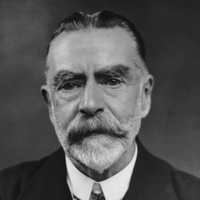
William Arthur Dunkerley (12 November 1852 – 23 January 1941) was an English journalist, novelist and poet. He was born in Manchester, spent a short time after his marriage in the US before moving to Ealing, West London, where he served as deacon and teacher at the Ealing Congregational Church from the 1880s. In 1922 he moved to Worthing in Sussex, where he became the town’s mayor.Dunkerley wrote under his own name, and also as John Oxenham for his poetry, hymn-writing, and novels. His poetry includes Bees in Amber: A Little Book of Thoughtful Verse (1913), which became a bestseller. He also wrote the poem “Greatheart”. He used the pseudonym Julian Ross for journalism. In February 1892 Robert Barr and Dunkerley founded The Idler, a monthly “general interest magazine, one of the first to appear following the enthusiastic reception of The Strand, but not a slavish imitation”. Barr and Dunkerley/Oxenham both contributed as writers. The editors were Barr and Jerome K. Jerome initially.Dunkerley had two sons and four daughters, of whom the eldest, and eldest child, Elsie Jeanette, became well known as a children’s writer, particularly through her Abbey Series of girls’ school stories. Another daughter, Erica, also used the Oxenham pen-name. The elder son, Roderic Dunkerley, had several titles published under his own name. References Wikipedia—https://en.wikipedia.org/wiki/William_Arthur_Dunkerley
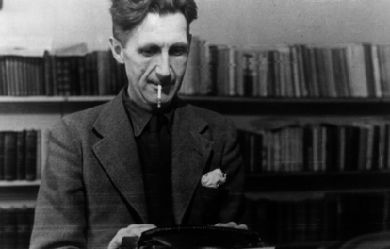
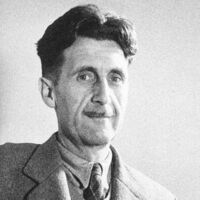
Eric Arthur Blair (25 June 1903 – 21 January 1950), better known by his pen name George Orwell, was an English novelist and journalist. His work is marked by clarity, intelligence and wit, awareness of social injustice, opposition to totalitarianism, and belief in democratic socialism. Considered perhaps the 20th century's best chronicler of English culture, Orwell wrote literary criticism, poetry, fiction and polemical journalism. He is best known for the dystopian novel Nineteen Eighty-Four (1949) and the allegorical novella Animal Farm (1945), which together have sold more copies than any two books by any other 20th-century author. His book Homage to Catalonia (1938), an account of his experiences in the Spanish Civil War, is widely acclaimed, as are his numerous essays on politics, literature, language and culture. In 2008, The Times ranked him second on a list of "The 50 greatest British writers since 1945”.
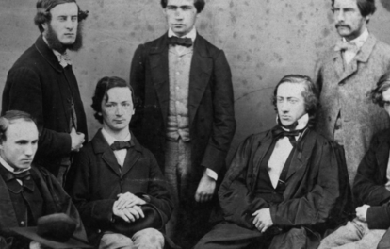
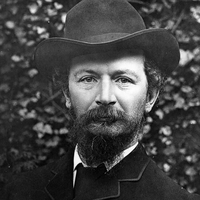
Algernon Charles Swinburne (5 April 1837– 10 April 1909) was an English poet, playwright, novelist, and critic. He wrote several novels and collections of poetry such as Poems and Ballads, and contributed to the famous Eleventh Edition of the Encyclopædia Britannica. A controversial figure at the time, Swinburne was a sado-masochist and alcoholic and was obsessed with the Middle Ages and lesbianism. Swinburne wrote about many taboo topics, such as lesbianism, cannibalism, sado-masochism, and anti-theism. His poems have many common motifs, such as the Ocean, Time, and Death. Several historical people are featured in his poems, such as Sappho ("Sapphics"), Anactoria ("Anactoria"), Jesus ("Hymn to Proserpine": Galilaee, La. “Galilean”) and Catullus ("To Catullus"). Biography Swinburne was born at 7 Chester Street, Grosvenor Place, London, on 5 April 1837. He was the eldest of six children born to Captain (later Admiral) Charles Henry Swinburne (1797–1877) and Lady Jane Henrietta, daughter of the 3rd Earl of Ashburnham. He grew up at East Dene in Bonchurch on the Isle of Wight. He attended Eton College (1849–53), where he first started writing poetry, and then Balliol College, Oxford (1856–60) with a brief hiatus when he was rusticated from the university in 1859 for having publicly supported the attempted assassination of Napoleon III by Felice Orsini. He returned in May 1860, though he never received a degree. He spent summer holidays at Capheaton Hall in Northumberland, the house of his grandfather, Sir John Swinburne, 6th Baronet (1762–1860), who had a famous library and was President of the Literary and Philosophical Society in Newcastle upon Tyne. Swinburne considered Northumberland to be his native county, an emotion reflected in poems like the intensely patriotic 'Northumberland’, 'Grace Darling’ and others. He enjoyed riding his pony across the moors (he was a daring horseman) 'through honeyed leagues of the northland border’, as he called the Scottish border in his Recollections. In the period 1857–60, Swinburne became one of Lady Pauline Trevelyan’s intellectual circle at Wallington Hall. After his grandfather’s death in 1860, he stayed with William Bell Scott in Newcastle. In 1861, Swinburne visited Menton on the French Riviera to recover from excessive use of alcohol, staying at the Villa Laurenti. From Menton, Swinburne travelled to Italy, where he journeyed extensively. In December 1862, Swinburne accompanied Scott and his guests, probably including Dante Gabriel Rossetti, on a trip to Tynemouth. Scott writes in his memoirs that, as they walked by the sea, Swinburne declaimed the as yet unpublished 'Hymn to Proserpine’ and 'Laus Veneris’ in his lilting intonation, while the waves 'were running the whole length of the long level sands towards Cullercoats and sounding like far-off acclamations’. At Oxford, Swinburne met several Pre-Raphaelites, including Dante Gabriel Rossetti. He also met William Morris. After leaving college, he lived in London and started an active writing career, where Rossetti was delighted with his 'little Northumbrian friend’, probably a reference to Swinburne’s diminutive height—he was just five foot four. Swinburne was an alcoholic and algolagniac and highly excitable. He liked to be flogged. His health suffered; and, in 1879 at the age of 42, he was taken into care by his friend, lawyer Theodore Watts, who looked after him for the rest of his life at The Pines, 11 Putney Hill, Putney SW15. Thereafter, he lost his youthful rebelliousness and developed into a figure of social respectability. It was said of Watts that he saved the man and killed the poet. Swinburne died at the Pines on 10 April 1909 at the age of 72 and was buried at St. Boniface Church, Bonchurch on the Isle of Wight. Reception Swinburne is considered a poet of the decadent school, although he perhaps professed to more vice than he actually indulged in to advertise his deviance– he spread a rumour that he had had sex with, then eaten, a monkey; Oscar Wilde stated that Swinburne was “a braggart in matters of vice, who had done everything he could to convince his fellow citizens of his homosexuality and bestiality without being in the slightest degree a homosexual or a bestialiser.” Many critics consider his mastery of vocabulary, rhyme and metre impressive, although he has also been criticised for his florid style and word choices that only fit the rhyme scheme rather than contributing to the meaning of the piece. He is the virtual star of the third volume of George Saintsbury’s famous History of English Prosody, and A. E. Housman, a more measured and even somewhat hostile critic, had great praise for his rhyming ability: [Swinburne] possessed an altogether unexampled command of rhyme, the chief enrichment of modern verse. The English language is comparatively poor in rhymes, and most English poets, when they have to rhyme more than two or three words together, betray their embarrassment. They betray it, for instance, when they write sonnets after the strict Petrarchian rule: the poetical inferiority of most English sonnets, if compared with what their own authors have achieved in other forms of verse, is largely though not entirely the result of this difficulty. [...] To Swinburne the sonnet was child’s play: the task of providing four rhymes was not hard enough, and he wrote long poems in which each stanza required eight or ten rhymes, and wrote them so that he never seemed to be saying anything for the rhyme’s sake. Swinburne’s work was once quite popular among undergraduates at Oxford and Cambridge, though today it has gone out of fashion. This is at least somewhat contextual, as it tends to mirror the popular and academic consensus regarding his work, although his Poems and Ballads, First Series and his Atalanta in Calydon have never been out of critical favour. Atalanta in Calydon in particular has been lauded as one of his best early works, written in 1865, before the passionate excesses of later works earned him a sordid reputation for blasphemy and depravity among contemporary critics. T. S. Eliot read Swinburne’s essays on the Shakespearean and Jonsonian dramatists in The Contemporaries of Shakespeare and The Age of Shakespeare and Swinburne’s books on Shakespeare and Jonson. Writing on Swinburne in 'The Sacred Wood: Essays on Poetry and Criticism’, Eliot said, of Swinburne, he had mastered his material, writing 'he is more reliable to them than Hazlitt, Coleridge, or Lamb: and his perception of relative values is almost always correct’. However, Eliot judged Swinburne did not master it to the extent of being able to take liberties with it, which is everything. Furthermore, Eliot disliked Swinburne’s prose, about which he wrote “the tumultuous outcry of adjectives, the headstrong rush of undisciplined sentences, are the index to the impatience and perhaps laziness of a disorderly mind.” Swinburne was nominated for the Nobel Prize in Literature every year from 1903 to 1907 and again in 1909. H. P. Lovecraft considered Swinburne “the only real poet in either England or America after the death of Mr. Edgar Allan Poe.” Work Swinburne’s poetic works include: Atalanta in Calydon (1865), Poems and Ballads (1866), Songs before Sunrise (1871), Poems and Ballads Second Series, (1878) Tristram of Lyonesse (1882), Poems and Ballads Third Series (1889), and the novel Lesbia Brandon (published posthumously in 1952). Poems and Ballads caused a sensation when it was first published, especially the poems written in homage of Sappho of Lesbos such as “Anactoria” and “Sapphics”: Moxon and Co. transferred its publication rights to John Camden Hotten. Other poems in this volume such as “The Leper,” “Laus Veneris,” and “St Dorothy” evoke a Victorian fascination with the Middle Ages, and are explicitly mediaeval in style, tone and construction. Also featured in this volume are “Hymn to Proserpine”, “The Triumph of Time” and “Dolores (Notre-Dame des Sept Douleurs)”. Swinburne devised the poetic form called the roundel, a variation of the French Rondeau form, and some were included in A Century of Roundels dedicated to Christina Rossetti. Swinburne wrote to Edward Burne-Jones in 1883: "I have got a tiny new book of songs or songlets, in one form and all manner of metres... just coming out, of which Miss Rossetti has accepted the dedication. I hope you and Georgie [his wife Georgiana, one of the MacDonald sisters] will find something to like among a hundred poems of nine lines each, twenty-four of which are about babies or small children". Opinions of these poems vary between those who find them captivating and brilliant, to those who find them merely clever and contrived. One of them, A Baby’s Death, was set to music by the English composer Sir Edward Elgar as the song Roundel: The little eyes that never knew Light. Swinburne was influenced by the work of William Shakespeare, Percy Bysshe Shelley, Catullus, William Morris, Dante Gabriel Rossetti, Robert Browning, Alfred Lord Tennyson, and Victor Hugo. While he was popular in England during his life, Swinburne’s influence has greatly decreased since his death. After the first Poems and Ballads, Swinburne’s later poetry was devoted more to philosophy and politics, including the unification of Italy, particularly in the volume Songs before Sunrise. He did not stop writing love poetry entirely, including his great epic-length poem, Tristram of Lyonesse, but its content is much less shocking. His versification, and especially his rhyming technique, remain in top form to the end. Verse drama The Queen Mother (1860) Rosamond (1860) Chastelard (1865) Bothwell (1874) Mary Stuart (1881) Marino Faliero (1885) Locrine (1887) The Sisters (1892) Rosamund, Queen of the Lombards (1899) Poetry Atalanta in Calydon (1865)† Poems and Ballads (1866) Songs Before Sunrise (1871) Songs of Two Nations (1875) Erechtheus (1876)† Poems and Ballads, Second Series (1878) Songs of the Springtides (1880) Studies in Song (1880) The Heptalogia, or the Seven against Sense. A Cap with Seven Bells (1880) Tristam of Lyonesse (1882) A Century of Roundels (1883) A Midsummer Holiday and Other Poems (1884) Poems and Ballads, Third Series (1889) Astrophel and Other Poems (1894) The Tale of Balen (1896) A Channel Passage and Other Poems (1904) ^† Although formally tragedies, Atlanta in Calydon and Erechtheus are traditionally included with “poetry”. Criticism William Blake: A Critical Essay (1868, new edition 1906) Under the Microscope (1872) George Chapman: A Critical Essay (1875) Essays and Studies (1875) A Note on Charlotte Brontë (1877) A Study of Shakespeare (1880) A Study of Victor Hugo (1886) A Study of Ben Johnson (1889) Studies in Prose and Poetry (1894) The Age of Shakespeare (1908) Shakespeare (1909) Major collections The poems of Algernon Charles Swinburne, 6 vols. London: Chatto & Windus, 1904. The Tragedies of Algernon Charles Swinburne, 5 vols. London: Chatto & Windus, 1905. The Complete Works of Algernon Charles Swinburne, ed. Sir Edmund Gosse and Thomas James Wise, 20 vols. Bonchurch Edition; London and New York: William Heinemann and Gabriel Wells, 1925-7. The Swinburne Letters, ed. Cecil Y. Lang, 6 vols. 1959-62. Ancestry References Wikipedia—https://en.wikipedia.org/wiki/Algernon_Charles_Swinburne
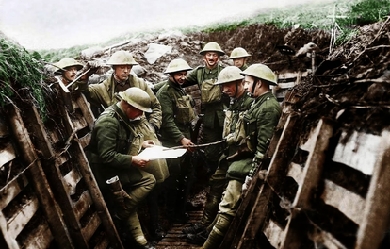

Rupert Chawner Brooke (middle name sometimes given as "Chaucer"; 3 August 1887 – 23 April 1915) was an English poet known for his idealistic war sonnets written during the First World War, especially "The Soldier". He was also known for his boyish good looks, which were said to have prompted the Irish poet W. B. Yeats to describe him as "the handsomest young man in England”. Brooke belonged to another literary group known as the Georgian Poets and was one of the most important of the Dymock poets, associated with the Gloucestershire village of Dymock where he spent some time before the war. He also lived in the Old Vicarage, Grantchester. While travelling in Europe he prepared a thesis, entitled "John Webster and the Elizabethan Drama", which won him a scholarship to King's College, Cambridge, where he became a member of the Cambridge Apostles, was elected as President of the Cambridge University Fabian Society, helped found the Marlowe Society drama club and acted in plays including the Cambridge Greek Play. To Rupert Brooke (by Eden Phillpotts, from ‘Plain Song, 1914-1916’) Though we, a happy few, Indubitably knew That from the purple came This poet of pure flame, The world first saw his light Flash on an evil night, And heard his song from far Above the drone of war. Out of the primal dark He leapt, like lyric lark, Singing his aubade strain; Then fell to earth again. We garner all he gave, And on his hero grave, For love and honour strew, Rosemary, myrtle, rue. Son of the Morning, we Had kept you thankfully; But yours the asphodel: Hail, singer, and farewell!
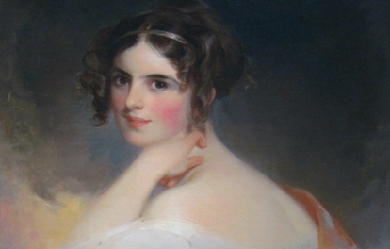
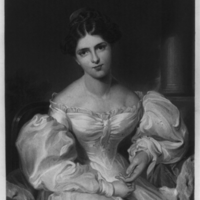
Frances Anne “Fanny” Kemble (27 November 1809– 15 January 1893) was a notable British actress from a theatre family in the early and mid-19th century. She was a well-known and popular writer, whose published works included plays, poetry, eleven volumes of memoirs, travel writing and works about the theatre.
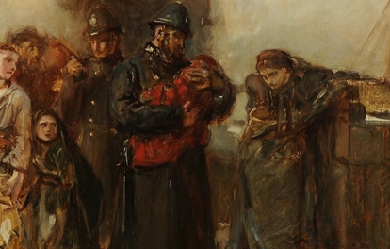
.jpg?locale=es)
Sir William Schwenck Gilbert (18 November 1836– 29 May 1911) was an English dramatist, librettist, poet and illustrator best known for the fourteen comic operas (known as the Savoy operas) produced in collaboration with the composer Sir Arthur Sullivan. The most famous of these include H.M.S. Pinafore, The Pirates of Penzance and one of the most frequently performed works in the history of musical theatre, The Mikado. These, as well as several of the other Savoy operas, continue to be frequently performed in the English-speaking world and beyond by opera companies, repertory companies, schools and community theatre groups. Lines from these works have become part of the English language, such as “short, sharp shock”, “What, never? Well, hardly ever!”, and “Let the punishment fit the crime”. Gilbert also wrote the Bab Ballads, an extensive collection of light verse accompanied by his own comical drawings. His creative output included over 75 plays and libretti, numerous stories, poems, lyrics and various other comic and serious pieces. His plays and realistic style of stage direction inspired other dramatists, including Oscar Wilde and George Bernard Shaw. According to The Cambridge History of English and American Literature, Gilbert’s “lyrical facility and his mastery of metre raised the poetical quality of comic opera to a position that it had never reached before and has not reached since”. Early life and career Beginnings Gilbert was born at 17 Southampton Street, Strand, London. His father, also named William, was briefly a naval surgeon, who later became a writer of novels and short stories, some of which were illustrated by his son. Gilbert’s mother was the former Anne Mary Bye Morris (1812–1888), the daughter of Thomas Morris, an apothecary. Gilbert’s parents were distant and stern, and he did not have a particularly close relationship with either of them. They quarrelled increasingly, and following the break-up of their marriage in 1876, his relationships with them, especially his mother, became even more strained. Gilbert had three younger sisters, two of whom were born outside England because of the family’s travels during these years: Jane Morris (b. 1838 in Milan, Italy– 1906), who married Alfred Weigall, a miniatures painter; Anne Maude (1845–1932) and Mary Florence (b. 1843 in Boulogne, France– 1911), neither of whom married. Gilbert was nicknamed “Bab” as a baby, and then “Schwenck”, after his father’s godparents. As a child, Gilbert travelled to Italy in 1838 and then France for two years with his parents, who finally returned to settle in London in 1847. He was educated at Boulogne, France from the age of seven (he later kept his diary in French so that the servants could not read it), then at Western Grammar School, Brompton, London, and then at the Great Ealing School, where he became head boy and wrote plays for school performances and painted scenery. He then attended King’s College London, graduating in 1856. He intended to take the examinations for a commission in the Royal Artillery, but with the end of the Crimean War, fewer recruits were needed, and the only commission available to Gilbert would have been in a line regiment. Instead he joined the Civil Service: he was an assistant clerk in the Privy Council Office for four years and hated it. In 1859 he joined the Militia, a part-time volunteer force formed for the defence of Britain, with which he served until 1878 (in between writing and other work), reaching the rank of Captain. In 1863 he received a bequest of £300 that he used to leave the civil service and take up a brief career as a barrister (he had already entered the Inner Temple as a student), but his legal practice was not successful, averaging just five clients a year. To supplement his income from 1861 on, Gilbert wrote a variety of stories, comic rants, grotesque illustrations, theatre reviews (many in the form of a parody of the play being reviewed), and, under the pseudonym “Bab” (his childhood nickname), illustrated poems for several comic magazines, primarily Fun, started in 1861 by H. J. Byron. He published stories, articles, and reviews in papers such as the Cornhill Magazine, London Society, Tinsley’s Magazine and Temple Bar. In addition, Gilbert was the London correspondent for L’Invalide Russe and a drama critic for the Illustrated London Times. In the 1860s he also contributed to Tom Hood’s Christmas annuals, to Saturday Night, the Comic News and the Savage Club Papers. The Observer newspaper in 1870 sent him to France as a war correspondent reporting on the Franco-Prussian War. The poems, illustrated humorously by Gilbert, proved immensely popular and were reprinted in book form as the Bab Ballads. He would later return to many of these as source material for his plays and comic operas. Gilbert and his colleagues from Fun, including Tom Robertson, Tom Hood, Clement Scott and F. C. Burnand (who defected to Punch in 1862) frequented the Arundel Club, the Savage Club, and especially Evans’s café, where they had a table in competition with the Punch 'Round table’. After a relationship in the mid-1860s with novelist Annie Thomas, Gilbert married Lucy Agnes Turner, whom he called “Kitty”, in 1867; she was 11 years his junior. He wrote many affectionate letters to her over the years. Gilbert and Lucy were socially active both in London and later at Grim’s Dyke, often holding dinner parties and being invited to others’ homes for dinner, in contrast to the picture painted by fictionalisations such as the film Topsy-Turvy. The Gilberts had no children, but they had many pets, including some exotic ones. First plays Gilbert wrote and directed a number of plays at school, but his first professionally produced play was Uncle Baby, which ran for seven weeks in the autumn of 1863. In 1865–66, Gilbert collaborated with Charles Millward on several pantomimes, including one called Hush-a-Bye, Baby, On the Tree Top, or, Harlequin Fortunia, King Frog of Frog Island, and the Magic Toys of Lowther Arcade (1866). Gilbert’s first solo success, however, came a few days after Hush-a-Bye Baby premiered. His friend and mentor, Tom Robertson, was asked to write a pantomime but did not think he could do it in the two weeks available, and so he recommended Gilbert instead. Written and rushed to the stage in 10 days, Dulcamara, or the Little Duck and the Great Quack, a burlesque of Gaetano Donizetti’s L’elisir d’amore, proved extremely popular. This led to a long series of further Gilbert opera burlesques, pantomimes and farces, full of awful puns (traditional in burlesques of the period), though showing, at times, signs of the satire that would later be a defining part of Gilbert’s work. For instance: This was followed by Gilbert’s penultimate operatic parody, Robert the Devil, a burlesque of Giacomo Meyerbeer’s opera, Robert le diable, which was part of a triple bill that opened the Gaiety Theatre, London in 1868. The piece was Gilbert’s biggest success to date, running for over 100 nights and being frequently revived and played continuously in the provinces for three years thereafter. In Victorian theatre, "[to degrade] high and beautiful themes... had been the regular proceeding in burlesque, and the age almost expected it" However, Gilbert’s burlesques were considered unusually tasteful compared to the others on the London stage. Isaac Goldberg wrote that these pieces “reveal how a playwright may begin by making burlesque of opera and end by making opera of burlesque.” Gilbert would depart even further from the burlesque style from about 1869 with plays containing original plots and fewer puns. His first full-length prose comedy was An Old Score (1869). German Reed entertainments and other plays of the early 1870s Theatre, at the time Gilbert began writing, had fallen into disrepute. Badly translated and adapted French operettas and poorly written, prurient Victorian burlesques dominated the London stage. As Jessie Bond vividly described it, “stilted tragedy and vulgar farce were all the would-be playgoer had to choose from, and the theatre had become a place of evil repute to the righteous British householder.” From 1869 to 1875, Gilbert joined with one of the leading figures in theatrical reform, Thomas German Reed (and his wife Priscilla), whose Gallery of Illustration sought to regain some of theatre’s lost respectability by offering family entertainments in London. So successful were they that by 1885 Gilbert stated that original British plays were appropriate for an innocent 15-year-old girl in the audience. Three months before the opening of Gilbert’s last burlesque (The Pretty Druidess), the first of his pieces for the Gallery of Illustration, No Cards, was produced. Gilbert created six musical entertainments for the German Reeds, some with music composed by Thomas German Reed himself. The environment of the German Reeds’ intimate theatre allowed Gilbert quickly to develop a personal style and freedom to control all aspects of production, including set, costumes, direction and stage management. These works were a success, with Gilbert’s first big hit at the Gallery of Illustration, Ages Ago, opening in 1869. Ages Ago was also the beginning of a collaboration with the composer Frederic Clay that would last seven years and produce four works. It was at a rehearsal for Ages Ago that Clay formally introduced Gilbert to his friend, Arthur Sullivan. The Bab Ballads and Gilbert’s many early musical works gave him much practice as a lyricist even before his collaboration with Sullivan. Many of the plot elements of the German Reed Entertainments (as well as some from his earlier plays and Bab Ballads) would be reused by Gilbert later in the Gilbert and Sullivan operas. These elements include paintings coming to life (Ages Ago, used again in Ruddigore), a deaf nursemaid binding a respectable man’s son to a “pirate” instead of to a “pilot” by mistake (Our Island Home, 1870, reused in The Pirates of Penzance), and the forceful mature lady who is “an acquired taste” (Eyes and No Eyes, 1875, reused in The Mikado). During this time, Gilbert perfected the 'topsy-turvy’ style that he had been developing in his Bab Ballads, where the humour was derived by setting up a ridiculous premise and working out its logical consequences, however absurd. Mike Leigh describes the “Gilbertian” style as follows: "With great fluidity and freedom, [Gilbert] continually challenges our natural expectations. First, within the framework of the story, he makes bizarre things happen, and turns the world on its head. Thus the Learned Judge marries the Plaintiff, the soldiers metamorphose into aesthetes, and so on, and nearly every opera is resolved by a deft moving of the goalposts... His genius is to fuse opposites with an imperceptible sleight of hand, to blend the surreal with the real, and the caricature with the natural. In other words, to tell a perfectly outrageous story in a completely deadpan way.” At the same time, Gilbert created several 'fairy comedies’ at the Haymarket Theatre. This series of plays was founded upon the idea of self-revelation by characters under the influence of some magic or some supernatural interference. The first was The Palace of Truth (1870), based partly on a story by Madame de Genlis. In 1871, with Pygmalion and Galatea, one of seven plays that he produced that year, Gilbert scored his greatest hit to date. Together, these plays and their successors such as The Wicked World (1873), Sweethearts (1874), and Broken Hearts (1875), did for Gilbert on the dramatic stage what the German Reed entertainments had done for him on the musical stage: they established that his capabilities extended far beyond burlesque, won him artistic credentials, and demonstrated that he was a writer of wide range, as comfortable with human drama as with farcical humour. The success of these plays, especially Pygmalion and Galatea, gave Gilbert a prestige that would be crucial to his later collaboration with as respected a musician as Sullivan. Though dated, these works demonstrate Gilbert’s desire to give respectable and well-educated theatre audiences comedies that were more refined and tasteful than the usual farces and burlesques playing in London. On the other hand, during the same period, Gilbert pushed the boundaries of how far satire could go in the theatre. He collaborated with Gilbert Arthur à Beckett on The Happy Land (1873), a political satire (in part, a parody of his own The Wicked World), which was briefly banned because of its unflattering caricatures of Gladstone and his ministers. Similarly, The Realm of Joy (1873) was set in the lobby of a theatre performing a scandalous play (implied to be the Happy Land), with many jokes at the expense of the Lord Chamberlain (the “Lord High Disinfectant”, as he’s referred to in the play). In Charity (1874), however, Gilbert uses the freedom of the stage in a different way: to provide a tightly-written critique of the contrasting ways in which Victorian society treated men and women who had sex outside of marriage, which anticipated the 'problem plays’ of Shaw and Ibsen. As a director Once he became established, Gilbert was the stage director for his plays and operas and had strong opinions on how they should best be performed. He was strongly influenced by the innovations in 'stagecraft’, now called stage direction, by the playwrights James Planché and especially Tom Robertson. Gilbert attended rehearsals directed by Robertson to learn this art firsthand from the older director, and he began to apply it in some of his earliest plays. He sought realism in acting, settings, costumes and movement, if not in content of his plays (although he did write a romantic comedy in the “naturalist” style, as a tribute to Robertson, Sweethearts), shunned self-conscious interaction with the audience, and insisted on a style of portrayal in which the characters were never aware of their own absurdity, but were coherent internal wholes. In Gilbert’s 1874 burlesque, Rosencrantz and Guildenstern, the character Hamlet, in his speech to the players, sums up Gilbert’s theory of comic acting: “I hold that there is no such antick fellow as your bombastical hero who doth so earnestly spout forth his folly as to make his hearers believe that he is unconscious of all incongruity”. With his work along these lines, Gilbert set the ground for later playwrights such as George Bernard Shaw and Oscar Wilde to be able to flourish on the English stage. Robertson "introduced Gilbert both to the revolutionary notion of disciplined rehearsals and to mise-en-scène or unity of style in the whole presentation– direction, design, music, acting." Like Robertson, Gilbert demanded discipline in his actors. He required that his actors know their words perfectly, enunciate them clearly and obey his stage directions, which was something quite new to many actors of the day. A major innovation was the replacement of the star actor with the disciplined ensemble, “raising the director to a new position of dominance” in the theatre. “That Gilbert was a good director is not in doubt. He was able to extract from his actors natural, clear performances, which served the Gilbertian requirements of outrageousness delivered straight.” Gilbert prepared meticulously for each new work, making models of the stage, actors and set pieces, and designing every action and bit of business in advance. Gilbert would not work with actors who challenged his authority. Even during long runs and revivals, Gilbert closely supervised the performances of his plays, making sure that the actors did not make unauthorised additions, deletions or paraphrases. Gilbert was famous for demonstrating the action himself, even as he grew older. Gilbert himself went on stage in a number of productions throughout his lifetime, including several performances as the Associate in Trial by Jury, as substitute for an ailing actor in his play Broken Hearts, and in charity matinees of his one-act plays, such as King Claudius in Rosencrantz and Guildenstern. Collaboration with Sullivan First collaborations amidst other works In 1871, John Hollingshead commissioned Gilbert to work with Sullivan on a holiday piece for Christmas, Thespis, or The Gods Grown Old, at the Gaiety Theatre. Thespis outran five of its nine competitors for the 1871 holiday season, and its run was extended beyond the length of a normal run at the Gaiety, However, nothing more came of it at that point, and Gilbert and Sullivan went their separate ways. Gilbert worked again with Clay on Happy Arcadia (1872), and with Alfred Cellier on Topsyturveydom (1874), as well as writing several farces, operetta libretti, extravaganzas, fairy comedies, adaptations from novels, translations from the French, and the dramas described above. Also in 1874, he published his last contribution for Fun magazine ("Rosencrantz and Guildenstern"), after a gap of three years, then resigned due to disapproval of the new owner’s other publishing interests. It would be nearly four years after Thespis was produced before the two men worked together again. In 1868, Gilbert had published a short comedic sketch libretto in Fun magazine entitled “Trial by Jury: An Operetta”. In 1873, Gilbert arranged with the theatrical manager and composer, Carl Rosa, to expand the piece into a one-act libretto. Rosa’s wife was to sing the role of the plaintiff. However, Rosa’s wife died in childbirth in 1874. Later in 1874 Gilbert offered the libretto to Richard D’Oyly Carte, but Carte could not use the piece at that time. By early 1875, Carte was managing the Royalty Theatre, and he needed a short opera to be played as an afterpiece to Offenbach’s La Périchole. He contacted Gilbert, asked about the piece, and suggested Sullivan to set the work. Sullivan was enthusiastic, and Trial by Jury was composed in a matter of weeks. The little piece was a runaway hit, outlasting the run of La Périchole and being revived at another theatre. Gilbert continued his quest to gain respect in and respectability for his profession. One thing that may have been holding dramatists back from respectability was that plays were not published in a form suitable for a “gentleman’s library”, as, at the time, they were generally cheaply and unattractively published for the use of actors rather than the home reader. To help rectify this, at least for himself, Gilbert arranged in late 1875 for publishers Chatto and Windus to print a volume of his plays in a format designed to appeal to the general reader, with an attractive binding and clear type, containing Gilbert’s most respectable plays, including his most serious works, but mischievously capped off with Trial by Jury. After the success of Trial by Jury, there were discussions towards reviving Thespis, but Gilbert and Sullivan were not able to agree on terms with Carte and his backers. The score to Thespis was never published, and most of the music is now lost. It took some time for Carte to gather funds for another Gilbert and Sullivan opera, and in this gap Gilbert produced several works including Tom Cobb (1875), Eyes and No Eyes (1875, his last German Reed Entertainment), and Princess Toto (1876), his last and most ambitious work with Clay, a three-act comic opera with full orchestra, as opposed to the shorter works for much reduced accompaniment that came before. Gilbert also wrote two serious works during this time, Broken Hearts (1875) and Dan’l Druce, Blacksmith (1876). Also during this period, Gilbert wrote his most successful comic play, Engaged (1877), which inspired Oscar Wilde’s The Importance of Being Earnest. Engaged is a parody of romantic drama written in the “topsy-turvy” satiric style of many of Gilbert’s Bab Ballads and the Savoy Operas, with one character pledging his love, in the most poetic and romantic language possible, to every single woman in the play; the “innocent” Scottish rustics being revealed to be making a living through throwing trains off the lines and then charging the passengers for services, and, in general, romance being gladly thrown over in favour of monetary gain. Engaged continues to be performed today by both professional and amateur companies. Peak collaborative years Carte finally assembled a syndicate in 1877 and formed the Comedy Opera Company to launch a series of original English comic operas, beginning with a third collaboration between Gilbert and Sullivan, The Sorcerer, in November 1877. This work was a modest success, and H.M.S. Pinafore followed in May 1878. Despite a slow start, mainly due to a scorching summer, Pinafore became a red-hot favourite by autumn. After a dispute with Carte over the division of profits, the other Comedy Opera Company partners hired thugs to storm the theatre one night to steal the sets and costumes, intending to mount a rival production. The attempt was repelled by stagehands and others at the theatre loyal to Carte, and Carte continued as sole impresario of the newly renamed D’Oyly Carte Opera Company. Indeed, Pinafore was so successful that over a hundred unauthorised productions sprang up in America alone. Gilbert, Sullivan and Carte tried for many years to control the American performance copyrights over their operas, without success. For the next decade, the Savoy Operas (as the series came to be known, after the theatre Carte later built to house them) were Gilbert’s principal activity. The successful comic operas with Sullivan continued to appear every year or two, several of them being among the longest-running productions up to that point in the history of the musical stage. After Pinafore came The Pirates of Penzance (1879), Patience (1881), Iolanthe (1882), Princess Ida (1884, based on Gilbert’s earlier farce, The Princess), The Mikado (1885), Ruddigore (1887), The Yeomen of the Guard (1888), and The Gondoliers (1889). Gilbert not only directed and oversaw all aspects of production for these works, but he actually designed the costumes himself for Patience, Iolanthe, Princess Ida, and Ruddigore. He insisted on precise and authentic sets and costumes, which provided a foundation to ground and focus his absurd characters and situations. During this time, Gilbert and Sullivan also collaborated on one other major work, the oratorio The Martyr of Antioch, premiered at the Leeds music festival in October 1880. Gilbert arranged the original epic poem by Henry Hart Milman into a libretto suitable for the music, and it contains some original work. During this period, also, Gilbert occasionally wrote plays to be performed elsewhere–both serious dramas (for example The Ne’er-Do-Weel, 1878; and Gretchen, 1879) and humorous works (for example Foggerty’s Fairy, 1881). However, he no longer needed to turn out multiple plays each year, as he had done before. Indeed, during the more than nine years that separated The Pirates of Penzance and The Gondoliers, he wrote just three plays outside of the partnership with Sullivan. Only one of these works, Comedy and Tragedy, proved successful. In 1878, Gilbert realised a lifelong dream to play Harlequin, which he did at the Gaiety Theatre as part of an amateur charity production of The Forty Thieves, partly written by himself. Gilbert trained for Harlequin’s stylised dancing with his friend John D’Auban, who had arranged the dances for some of his plays and would choreograph most of the Gilbert and Sullivan operas. Producer John Hollingshead later remembered, “the gem of the performance was the grimly earnest and determined Harlequin of W. S. Gilbert. It gave me an idea of what Oliver Cromwell would have made of the character.” Another member of the cast recalled that Gilbert was tirelessly enthusiastic about the piece and often invited the cast to his home for dinner extra rehearsals. “A pleasanter, more genial, or agreeable companion than he was it would have been difficult, if not impossible, to find.” In 1882, Gilbert had a telephone installed in his home and at the prompt desk at the Savoy Theatre, so that he could monitor performances and rehearsals from his home study. Gilbert had referred to the new technology in Pinafore in 1878, only two years after the device was invented and before London even had telephone service. Carpet quarrel and end of the collaboration Gilbert sometimes had a strained working relationship with Sullivan, partly because each man saw himself allowing his work to be subjugated to the other’s, and partly due to their opposing personalities. Gilbert was often confrontational and notoriously thin-skinned, though prone to acts of extraordinary kindness, while Sullivan eschewed conflict. In addition, Gilbert imbued his libretti with “topsy-turvy” situations in which the social order was turned upside down. After a time, these subjects were often at odds with Sullivan’s desire for realism and emotional content. In addition, Gilbert’s political satire often poked fun at those in the circles of privilege, while Sullivan was eager to socialise among the wealthy and titled people who would become his friends and patrons. Throughout their collaboration, Gilbert and Sullivan disagreed several times over the choice of a subject. After both Princess Ida and Ruddigore, which were less successful than the seven other operas from H.M.S. Pinafore to The Gondoliers, Sullivan asked to leave the partnership, saying that he found Gilbert’s plots repetitive and that the operas were not artistically satisfying to him. While the two artists worked out their differences, Carte kept the Savoy open with revivals of their earlier works. On each occasion, after a few months’ pause, Gilbert responded with a libretto that met Sullivan’s objections, and the partnership continued successfully. In April 1890, during the run of The Gondoliers, however, Gilbert challenged Carte over the expenses of the production. Among other items to which Gilbert objected, Carte had charged the cost of a new carpet for the Savoy Theatre lobby to the partnership. Gilbert believed that this was a maintenance expense that should be charged to Carte alone. Gilbert confronted Carte, who refused to reconsider the accounts. Gilbert stormed out and wrote to Sullivan that “I left him with the remark that it was a mistake to kick down the ladder by which he had risen”. Helen Carte wrote that Gilbert had addressed Carte “in a way that I should not have thought you would have used to an offending menial.” As scholar Andrew Crowther has explained: After all, the carpet was only one of a number of disputed items, and the real issue lay not in the mere money value of these things, but in whether Carte could be trusted with the financial affairs of Gilbert and Sullivan. Gilbert contended that Carte had at best made a series of serious blunders in the accounts, and at worst deliberately attempted to swindle the others. It is not easy to settle the rights and wrongs of the issue at this distance, but it does seem fairly clear that there was something very wrong with the accounts at this time. Gilbert wrote to Sullivan on 28 May 1891, a year after the end of the “Quarrel”, that Carte had admitted "an unintentional overcharge of nearly £1,000 in the electric lighting accounts alone.” Gilbert brought suit, and after The Gondoliers closed in 1891, he withdrew the performance rights to his libretti, vowing to write no more operas for the Savoy. Gilbert next wrote The Mountebanks with Alfred Cellier and the flop Haste to the Wedding with George Grossmith, and Sullivan wrote Haddon Hall with Sydney Grundy. Gilbert eventually won the lawsuit and felt vindicated, but his actions and statements had been hurtful to his partners. Nevertheless, the partnership had been so profitable that, after the financial failure of the Royal English Opera House, Carte and his wife sought to reunite the author and composer. In 1891, after many failed attempts at reconciliation by the pair, Tom Chappell, the music publisher responsible for printing the Gilbert and Sullivan operas, stepped in to mediate between two of his most profitable artists, and within two weeks had succeeded. Two more operas resulted: Utopia, Limited (1893) and The Grand Duke (1896). Gilbert also offered a third libretto to Sullivan (His Excellency, 1894), but Gilbert’s insistence on casting Nancy McIntosh, his protegée from Utopia, led to Sullivan’s refusal. Utopia, concerning an attempt to “anglicise” a south Pacific island kingdom, was only a modest success, and The Grand Duke, in which a theatrical troupe, by means of a “statutory duel” and a conspiracy, takes political control of a grand duchy, was an outright failure. After that, the partnership ended for good. Sullivan continued to compose comic opera with other librettists but died four years later. In 1904, Gilbert would write, “... Savoy opera was snuffed out by the deplorable death of my distinguished collaborator, Sir Arthur Sullivan. When that event occurred, I saw no one with whom I felt that I could work with satisfaction and success, and so I discontinued to write libretti.” Later years Gilbert built the Garrick Theatre in 1889. The Gilberts moved to Grim’s Dyke in Harrow in 1890, which he purchased from Robert Heriot, to whom the artist Frederick Goodall had sold the property in 1880. In 1891, Gilbert was appointed Justice of the Peace for Middlesex. After casting Nancy McIntosh in Utopia, Limited, he and Lady Gilbert developed an affection for her, and she eventually gained the status of an unofficially adopted daughter, moving to Grim’s Dyke to live with them. She continued living there, even after Gilbert’s death, until Lady Gilbert’s death in 1936. A statue of Charles II, carved by Danish sculptor Caius Gabriel Cibber in 1681, was moved in 1875 from Soho Square to an island in the lake at Grim’s Dyke, where it remained when Gilbert purchased the property. On Lady Gilbert’s direction, it was restored to Soho Square in 1938. Although Gilbert announced a retirement from the theatre after the poor initial run of his last work with Sullivan, The Grand Duke (1896) and the poor reception of his 1897 play The Fortune Hunter, he produced at least three more plays over the last dozen years of his life, including an unsuccessful opera, Fallen Fairies (1909), with Edward German. Gilbert also continued to supervise the various revivals of his works by the D’Oyly Carte Opera Company, including its London Repertory seasons in 1906–09. His last play, The Hooligan, produced just four months before his death, is a study of a young condemned thug in a prison cell. Gilbert shows sympathy for his protagonist, the son of a thief who, brought up among thieves, kills his girlfriend. As in some earlier work, the playwright displays “his conviction that nurture rather than nature often accounted for criminal behaviour”. The grim and powerful piece became one of Gilbert’s most successful serious dramas, and experts conclude that, in those last months of Gilbert’s life, he was developing a new style, a “mixture of irony, of social theme, and of grubby realism,” to replace the old “Gilbertianism” of which he had grown weary. In these last years, Gilbert also wrote children’s book versions of H.M.S. Pinafore and The Mikado giving, in some cases, backstory that is not found in the librettos. Gilbert was knighted on 15 July 1907 in recognition of his contributions to drama. Sullivan had been knighted for his contributions to music almost a quarter of a century earlier, in 1883. Gilbert was, however, the first British writer ever to receive a knighthood for his plays alone—earlier dramatist knights, such as Sir William Davenant and Sir John Vanbrugh, were knighted for political and other services. On 29 May 1911, Gilbert was about to give a swimming lesson to two young women, Winifred Isabel Emery (1890–1972), and 17-year-old Ruby Preece in the lake of his home, Grim’s Dyke, when Preece lost her footing and called for help. Gilbert dived in to save her but suffered a heart attack in the middle of the lake and died. He was cremated at Golders Green and his ashes buried at the Church of St. John the Evangelist, Stanmore. The inscription on Gilbert’s memorial on the south wall of the Thames Embankment in London reads: “His Foe was Folly, and his Weapon Wit”. There is also a memorial plaque at All Saints’ Church, Harrow Weald. Personality Gilbert was known for being prickly. Aware of this general impression, he claimed that “If you give me your attention”, the misanthrope’s song from Princess Ida, was a satiric self-reference, saying: “I thought it my duty to live up to my reputation.” However, many people have defended him, often citing his generosity. Actress May Fortescue recalled, “His kindness was extraordinary. On wet nights and when rehearsals were late and the last buses were gone, he would pay the cab-fares of the girls whether they were pretty or not, instead of letting them trudge home on foot... He was just as large-hearted when he was poor as when he was rich and successful. For money as money he cared less than nothing. Gilbert was no plaster saint, but he was an ideal friend.” Journalist Frank M. Boyd wrote: I fancy that seldom was a man more generally given credit for a personality quite other than his own, than was the case with Sir W. S. Gilbert... Till one actually came to know the man, one shared the opinion held by so many, that he was a gruff, disagreeable person; but nothing could be less true of the really great humorist. He had rather a severe appearance... and like many other clever people, he had precious little use for fools of either sex, but he was at heart as kindly and lovable a man as you could wish to meet. Jessie Bond wrote that Gilbert “was quick-tempered, often unreasonable, and he could not bear to be thwarted, but how anyone could call him unamiable I cannot understand.” George Grossmith wrote to The Daily Telegraph that, although Gilbert had been described as an autocrat at rehearsals, “That was really only his manner when he was playing the part of stage director at rehearsals. As a matter of fact, he was a generous, kind true gentleman, and I use the word in the purest and original sense.” Aside from his occasional creative disagreements with, and eventual rift from, Sullivan, Gilbert’s temper led to the loss of friendships with a number of people. For instance, he quarrelled with his old associate C. H. Workman, over the firing of Nancy McIntosh from the production of Fallen Fairies, and with actress Henrietta Hodson. He also saw his friendship with theatre critic Clement Scott turn bitter. However, Gilbert could be extraordinarily kind. During Scott’s final illness in 1904, for instance, Gilbert donated to a fund for him, visited nearly every day, and assisted Scott’s wife, despite having not been on friendly terms with him for the previous sixteen years. Similarly, Gilbert had written several plays at the behest of comic actor Ned Sothern. However, Sothern died before he could perform the last of these, Foggerty’s Fairy. Gilbert purchased the play back from his grateful widow. According to one London society lady: [Gilbert]'s wit was innate, and his rapier-like retorts slipped out with instantaneous ease. His mind was naturally fastidious and clean; he never asserted himself, never tried to make an effect. He was great-hearted and most understanding, with an underlying poetry of fancy that made him the most delicious companion. They spoke of his quick temper, but that was entirely free from malice or guile. He was soft-hearted as a babe, but there was nothing of the hypocrite about him. What he thought he said on the instant, and though by people of sensitive vanity this might on occasion be resented, to a sensitiveness of a finer kind it was an added link, binding one to a faithful, valued friend. As the writings about Gilbert by husband and wife Seymour Hicks and Ellaline Terriss (frequent guests at his home) vividly illustrate, Gilbert’s relationships with women were generally more successful than his relationships with men. According to George Grossmith, Gilbert “was to those who knew him a courteous and amiable gentleman– a gentleman without veneer.” Grossmith and many others wrote of how Gilbert loved to amuse children: During my dangerous illness, Mr. Gilbert never failed a day to come up and enquire after me... and kept me in roars of laughter the whole time... But to see Gilbert at his best, is to see him at one of his juvenile parties. Though he has no children of his own, he loves them, and there is nothing he would not do to please them. I was never so astonished as when on one occasion he put off some of his own friends to come with Mrs. Gilbert to a juvenile party at my own house. Gilbert’s niece Mary Carter confirmed, "... he loved children very much and lost no opportunity of making them happy... [He was] the kindest and most human of uncles." Grossmith quoted Gilbert as saying, “Deer-stalking would be a very fine sport if only the deer had guns.” Legacy In 1957, a review in The Times explained “the continued vitality of the Savoy operas” as follows: [T]hey were never really contemporary in their idiom... Gilbert and Sullivan’s [world], from the first moment was obviously not the audience’s world, [it was] an artificial world, with a neatly controlled and shapely precision which has not gone out of fashion– because it was never in fashion in the sense of using the fleeting conventions and ways of thought of contemporary human society... The neat articulation of incredibilities in Gilbert’s plots is perfectly matched by his language... His dialogue, with its primly mocking formality, satisfies both the ear and the intelligence. His verses show an unequalled and very delicate gift for creating a comic effect by the contrast between poetic form and prosaic thought and wording... How deliciously [his lines] prick the bubble of sentiment. Gilbert had many imitators, but no equals, at this sort of thing... [Of] equal importance... Gilbert’s lyrics almost invariably take on extra point and sparkle when set to Sullivan’s music... The two men together remain endlessly and incomparably delightful... Light, and even trifling, though [the operas] may seem upon grave consideration, they yet have the shapeliness and elegance that can make a trifle into a work of art. Gilbert’s legacy, aside from building the Garrick Theatre and writing the Savoy Operas and other works that are still being performed or in print over a hundred and twenty-five years after their creation, is felt perhaps most strongly today through his influence on the American and British musical theatre. The innovations in content and form of the works that he and Sullivan developed, and in Gilbert’s theories of acting and stage direction, directly influenced the development of the modern musical throughout the 20th century. Gilbert’s lyrics employ punning, as well as complex internal and two and three-syllable rhyme schemes, and served as a model for such 20th century Broadway lyricists as P.G. Wodehouse, Cole Porter, Ira Gershwin, and Lorenz Hart. Gilbert’s influence on the English language has also been marked, with well-known phrases such as “A policeman’s lot is not a happy one”, “short, sharp shock”, “What never? Well, hardly ever!”, and “let the punishment fit the crime” arising from his pen. In addition, biographies continue to be written about Gilbert’s life and career, and his work is not only performed, but frequently parodied, pastiched, quoted and imitated in comedy routines, film, television and other popular media. Ian Bradley, in connection with the 100th anniversary of Gilbert’s death in 2011 wrote: There has been much discussion about Gilbert’s proper place in British literary and dramatic history. Was he essentially a writer of burlesque, a satirist, or, as some have argued, the forerunner of the theatre of the absurd?... Perhaps he stands most clearly in that distinctively English satirical tradition which stretches back to Jonathan Swift.... Its leading exponents lampoon and send up the major institutions and public figures of the day, wielding the weapon of grave and temperate irony with devastating effect, while themselves remaining firmly within the Establishment and displaying a deep underlying affection for the objects of their often merciless attacks. It is a combination that remains a continuing enigma. References Wikipedia—https://en.wikipedia.org/wiki/W._S._Gilbert
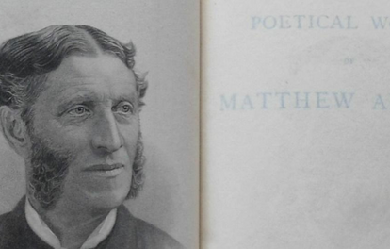
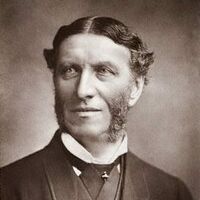
Although remembered now for his elegantly argued critical essays, Matthew Arnold (1822-1888) began his career as a poet, winning early recognition as a student at the Rugby School where his father, Thomas Arnold, had earned national acclaim as a strict and innovative headmaster. Arnold also studied at Balliol College, Oxford University. In 1844, after completing his undergraduate degree at Oxford, he returned to Rugby as a teacher of classics. After marrying in 1851, Arnold began work as a government school inspector, a grueling position which nonetheless afforded him the opportunity to travel throughout England and the Continent. Throughout his thirty-five years in this position Arnold developed an interest in education, an interest which fed into both his critical works and his poetry. Empedocles on Etna (1852) and Poems (1853) established Arnold's reputation as a poet and in 1857 he was offered a position, which he accepted and held until 1867, as Professor of Poetry at Oxford. Arnold became the first professor to lecture in English rather than Latin. During this time Arnold wrote the bulk of his most famous critical works, Essays in Criticism (1865) and Culture and Anarchy (1869), in which he sets forth ideas that greatly reflect the predominant values of the Victorian era. Meditative and rhetorical, Arnold's poetry often wrestles with problems of psychological isolation. In "To Marguerite—Continued," for example, Arnold revises Donne's assertion that "No man is an island," suggesting that we "mortals" are indeed "in the sea of life enisled." Other well-known poems, such as "Dover Beach," link the problem of isolation with what Arnold saw as the dwindling faith of his time. Despite his own religious doubts, a source of great anxiety for him, in several essays Arnold sought to establish the essential truth of Christianity. His most influential essays, however, were those on literary topics. In "The Function of Criticism" (1865) and "The Study of Poetry" (1880) Arnold called for a new epic poetry: a poetry that would address the moral needs of his readers, "to animate and ennoble them." Arnold's arguments, for a renewed religious faith and an adoption of classical aesthetics and morals, are particularly representative of mainstream Victorian intellectual concerns. His approach—his gentlemanly and subtle style—to these issues, however, established criticism as an art form, and has influenced almost every major English critic since, including T. S. Eliot, Lionel Trilling, and Harold Bloom. Though perhaps less obvious, the tremendous influence of his poetry, which addresses the poet's most innermost feelings with complete transparency, can easily be seen in writers as different from each other as W. B. Yeats, James Wright, Sylvia Plath, and Sharon Olds. Late in life, in 1883 and 1886, Arnold made two lecturing tours of the United States. Matthew Arnold died in Liverpool in 1888. A Selected Bibliography Poetry A Matthew Arnold Birthday Book (1883) Alaric at Rome: A Prize Poem (1840) Cromwell: A Prize Poem (1843) Empedocles on Etna and Other Poems (1852) Empedocles on Etna: A Dramatic Poem (1900) Merope: A Tragedy (1858) New Poems (1867) Poems: A New Edition (1853) Poems: Second Series (1855) The Poems of Matthew Arnold (1965) The Poetical Works of Matthew Arnold (1950) The Strayed Reveller and Other Poems (1849) The Works of Matthew Arnold (1903) Prose Essays, Letters, and Reviews by Matthew Arnold Essays, Letters, and Reviews by Matthew Arnold (1960) Friendship's Garland (1883) "Charles Augustin Sainte-Beuve," in Encyclopedia Britannica, ninth edition, IX: 162-165 (1886) "Isaiah of Jerusalem" in the Authorized English Version, with an Introduction, Corrections and Notes (1883) "Schools," in The Reign of Queen Victoria (1887) A Bible-Reading for Schools: The Great Prophecy of Israel's Restoration (1872) A French Eton; or, Middle Class Education and the State (1864) Arnold as Dramatic Critic (1903) Civilization in the United States: First and Last Impressions of America (1888) Complete Prose Works (1960) Culture and Anarchy (1883) Culture and Anarchy: An Essay in Political and Social Criticism (1869) Culture and the State (1965) Discourses in America (1885) Education Department (1886) England and the Italian Question (1859) England and the Italian Question, (1953) Essays in Criticism (1865) Essays in Criticism: Second Series (1888) Essays in Criticism: Third Series (1910) Five Uncollected Essays of Matthew Arnold (1953) General Grant, with a Rejoinder by Mark Twain (1966) General Grant: An Estimate (1887) God and the Bible: A Review of Objections to "Literature and Dogma" (1875) Heinrich Heine (1863) Higher Schools and Universities in Germany (1874) Irish Essays, and Others (1882) Isaiah XLLXVI; with the Shorter Prophecies Allied to It (1875) Last Essays on Church and Religion (1877) Letters of Matthew Arnold, 1848-1888 (1895) Letters of an Old Playgoer (1919) Letters, Speeches and Tracts on Irish Affairs by Edmund Burke (1881) Literature and Dogma: An Essay towards a Better Apprehension of the Bible (1873) Matthew Arnold's Letters: A Descriptive Checklist (1968) Matthew Arnold's Notebooks (1902) Mixed Essays (1879) On Home Rule for Ireland: Two Letters to "The Times" (1891) On Translating Homer: Last Words: A Lecture Given at Oxford (1862) On Translating Homer: Three Lectures Given at Oxford (1861) On the Modern Element in Literature (1869) On the Study of Celtic Literature (1883) Poems of Wordsworth (1879) Poetry of Byron (1881) Reports on Elementary Schools 1852-1882 (1889) Schools and Universities on the Continent (1867) St. Paul and Protestantism; with an Introduction on Puritanism and the Church of England (1883) The Hundred Greatest Men: Portraits of the One Hundred Greatest Men of History (1879) The Letters of Matthew Arnold to Arthur Hugh Clough (1932) The Note-Books of Matthew Arnold (1952) The Popular Education of France, with Notices of That of Holland and Switzerland (1861) The Six Chief Lives from Johnson's "Lives of the Poets," with Macaulay's "Life of Johnson," (1878) The Study of Poetry (1880) Thoughts on Education Chosen From the Writings of Matthew Arnold (1912) Unpublished Letters of Matthew Arnold (1923) References Poets.org - www.poets.org/poet.php/prmPID/88
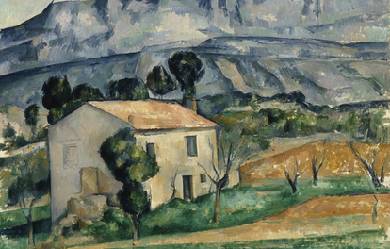
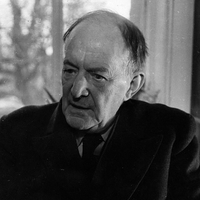
Walter John de la Mare (25 April 1873– 22 June 1956) was an English poet, short story writer and novelist. He is probably best remembered for his works for children, for his poem “The Listeners”, and for subtle psychological horror stories, amongst them “Seaton’s Aunt” and “Out of the Deep”. His 1921 novel Memoirs of a Midget won the James Tait Black Memorial Prize for fiction, and his post-war Collected Stories for Children won the 1947 Carnegie Medal for British children’s books.
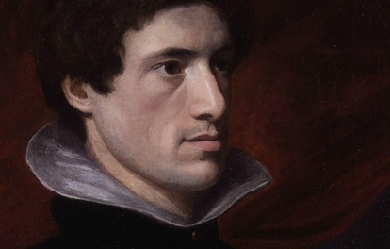
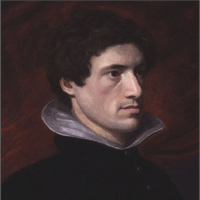
Charles Lamb (London, 10 February 1775 – Edmonton, 27 December 1834) was an English essayist, best known for his Essays of Elia and for the children's book Tales from Shakespeare, which he produced with his sister, Mary Lamb (1764–1847). Lamb has been referred to by E.V. Lucas, his principal biographer, as "the most lovable figure in English literature”. Youth and schooling Lamb was the son of Elizabeth Field and John Lamb. Lamb was the youngest child, with an 11 year older sister Mary, an even older brother John, and 4 other siblings who did not survive their infancy. John Lamb (father), who was a lawyer's clerk, spent most of his professional life as the assistant and servant to a barrister by the name of Samuel Salt who lived in the Inner Temple in London. It was there in the Inner Temple in Crown Office Row, that Charles Lamb was born and spent his youth. Lamb created a portrait of his father in his "Elia on the Old Benchers" under the name Lovel. Lamb's older brother was too much his senior to be a youthful companion to the boy but his sister Mary, being born eleven years before him, was probably his closest playmate. Lamb was also cared for by his paternal aunt Hetty, who seems to have had a particular fondness for him. A number of writings by both Charles and Mary suggest that the conflict between Aunt Hetty and her sister-in-law created a certain degree of tension in the Lamb household. However, Charles speaks fondly of her and her presence in the house seems to have brought a great deal of comfort to him. Some of Lamb's fondest childhood memories were of time spent with Mrs. Field, his maternal grandmother, who was for many years a servant to the Plummer family, who owned a large country house called Blakesware, near Widford, Hertfordshire. After the death of Mrs. Plummer, Lamb's grandmother was in sole charge of the large home and, as Mr. Plummer was often absent, Charles had free rein of the place during his visits. A picture of these visits can be glimpsed in the Elia essay Blakesmoor in H—shire. "Why, every plank and panel of that house for me had magic in it. The tapestried [sic] bed-rooms – tapestry so much better than painting – not adorning merely, but peopling the wainscots – at which childhood ever and anon would steal a look, shifting its coverlid (replaced as quickly) to exercise its tender courage in a momentary eye-encounter with those stern bright visages, staring reciprocally – all Ovid on the walls, in colours vivider than his descriptions.” Little is known about Charles's life before the age of seven. We know that Mary taught him to read at a very early age and he read voraciously. It is believed that he suffered from smallpox during his early years which forced him into a long period of convalescence. After this period of recovery Lamb began to take lessons from Mrs. Reynolds, a woman who lived in the Temple and is believed to have been the former wife of a lawyer. Mrs. Reynolds must have been a sympathetic schoolmistress because Lamb maintained a relationship with her throughout his life and she is known to have attended dinner parties held by Mary and Charles in the 1820s. E.V. Lucas suggests that sometime in 1781 Charles left Mrs. Reynolds and began to study at the Academy of William Bird. His time with William Bird did not last long, however, because by October 1782 Lamb was enrolled in Christ's Hospital, a charity boarding school chartered by King Edward VI in 1552. Christ's Hospital was a traditional English boarding school; bleak and full of violence. The headmaster, Mr. Boyer, has become famous for his teaching in Latin and Greek, but also for his brutality. A thorough record of Christ's Hospital in Several essays by Lamb as well as the Autobiography of Leigh Hunt and the Biographia Literaria of Samuel Taylor Coleridge, with whom Charles developed a friendship that would last for their entire lives. Despite the brutality Lamb got along well at Christ's Hospital, due in part, perhaps, to the fact that his home was not far distant thus enabling him, unlike many other boys, to return often to the safety of home. Years later, in his essay "Christ’s Hospital Five and Thirty Years Ago," Lamb described these events, speaking of himself in the third person as "L.” “I remember L. at school; and can well recollect that he had some peculiar advantages, which I and other of his schoolfellows had not. His friends lived in town, and were near at hand; and he had the privilege of going to see them, almost as often as he wished, through some invidious distinction, which was denied to us.” Christ's Hospital was a typical English boarding school and many students later wrote of the terrible violence they suffered there. The upper master of the school from 1778 to 1799 was Reverend James Boyer, a man renowned for his unpredictable and capricious temper. In one famous story Boyer was said to have knocked one of Leigh Hunt's teeth out by throwing a copy of Homer at him from across the room. Lamb seemed to have escaped much of this brutality, in part because of his amiable personality and in part because Samuel Salt, his father's employer and Lamb's sponsor at the school was one of the institute's Governors. Charles Lamb suffered from a stutter and this "an inconquerable impediment" in his speech deprived him of Grecian status at Christ's Hospital and thus disqualifying him for a clerical career. While Coleridge and other scholarly boys were able to go on to Cambridge, Lamb left school at fourteen and was forced to find a more prosaic career. For a short time he worked in the office of Joseph Paice, a London merchant and then, for 23 weeks, until 8 February 1792, held a small post in the Examiner's Office of the South Sea House. Its subsequent downfall in a pyramid scheme after Lamb left would be contrasted to the company's prosperity in the first Elia essay. On 5 April 1792 he went to work in the Accountant's Office for British East India Company, the death of his father's employer having ruined the family's fortunes.Charles would continue to work there for 25 years, until his retirement with pension. In 1792 while tending to his grandmother, Mary Field, in Hertfordshire, Charles Lamb fell in love with a young woman named Ann Simmons. Although no epistolary record exists of the relationship between the two, Lamb seems to have spent years wooing Miss Simmons. The record of the love exists in several accounts of Lamb's writing. Rosamund Gray is a story of a young man named Allen Clare who loves Rosamund Gray but their relationship comes to nothing because of the sudden death of Miss Gray. Miss Simmons also appears in several Elia essays under the name "Alice M." The essays "Dream Children," "New Year's Eve," and several others, speak of the many years that Lamb spent pursuing his love that ultimately failed. Miss Simmons eventually went on to marry a silversmith by the name of Bartram and Lamb called the failure of the affair his 'great disappointment. Family tragedy Charles and his sister Mary both suffered periods of mental illness. Charles spent six weeks in a psychiatric hospital during 1795. He was, however, already making his name as a poet. On 22 September 1796, a terrible event occurred: Mary, "worn down to a state of extreme nervous misery by attention to needlework by day and to her mother at night," was seized with acute mania and stabbed her mother to the heart with a table knife. Although there was no legal status of 'insanity' at the time, a jury returned a verdict of 'Lunacy' and therefore freed her from guilt of willful murder. With the help of friends Lamb succeeded in obtaining his sister's release from what would otherwise have been lifelong imprisonment, on the condition that he take personal responsibility for her safekeeping. Lamb used a large part of his relatively meagre income to keep his beloved sister in a private 'madhouse' in Islington called Fisher House. The 1799 death of John Lamb was something of a relief to Charles because his father had been mentally incapacitated for a number of years since suffering a stroke. The death of his father also meant that Mary could come to live again with him in Pentonville, and in 1800 they set up a shared home at Mitre Court Buildings in the Temple, where they lived until 1809. Despite Lamb's bouts of melancholia and alcoholism, both he and his sister enjoyed an active and rich social life. Their London quarters became a kind of weekly salon for many of the most outstanding theatrical and literary figures of the day. Charles Lamb, having been to school with Samuel Coleridge, counted Coleridge as perhaps his closest, and certainly his oldest, friend. On his deathbed, Coleridge had a mourning ring sent to Lamb and his sister. Fortuitously, Lamb's first publication was in 1796, when four sonnets by "Mr. Charles Lamb of the India House" appeared in Coleridge's Poems on Various Subjects. In 1797 he contributed additional blank verse to the second edition, and met the Wordsworths, William and Dorothy, on his short summer holiday with Coleridge at Nether Stowey, thereby also striking up a lifelong friendship with William. In London, Lamb became familiar with a group of young writers who favoured political reform, including Percy Bysshe Shelley, William Hazlitt, and Leigh Hunt. Lamb continued to clerk for the East India Company and doubled as a writer in various genres, his tragedy, John Woodvil, being published in 1802. His farce, Mr H, was performed at Drury Lane in 1807, where it was roundly booed. In the same year, Tales from Shakespeare (Charles handled the tragedies; his sister Mary, the comedies) was published, and became a best seller for William Godwin's "Children's Library." In 1819, at age 44, Lamb, who, because of family commitments, had never married, fell in love with an actress, Fanny Kelly, of Covent Garden, and proposed marriage. She refused him, and he died a bachelor. His collected essays, under the title Essays of Elia, were published in 1823 ("Elia" being the pen name Lamb used as a contributor to the London Magazine). A further collection was published ten years or so later, shortly before Lamb's death. He died of a streptococcal infection, erysipelas, contracted from a minor graze on his face sustained after slipping in the street, on 27 December 1834, just a few months after Coleridge. He was 59. From 1833 till their deaths Charles and Mary lived at Bay Cottage, Church Street, Edmonton north of London (now part of the London Borough of Enfield. Lamb is buried in All Saints' Churchyard, Edmonton. His sister, who was ten years his senior, survived him for more than a dozen years. She is buried beside him. Work Lamb's first publication was the inclusion of four sonnets in the Coleridge's Poems on Various Subjects published in 1796 by Joseph Cottle. The sonnets were significantly influenced by the poems of Burns and the sonnets of William Bowles, a largely forgotten poet of the late 18th century. His poems garnered little attention and are seldom read today. Lamb's contributions to the second edition of the Poems showed significant growth as a poet. These poems included The Tomb of Douglas and A Vision of Repentance. Because of a temporary fall-out with Coleridge, Lamb's poems were to be excluded in the third edition of the Poems. As it turned out, a third edition never emerged and instead Coleridge's next publication was the monumentally influential Lyrical Ballads co-published with Wordsworth. Lamb, on the other hand, published a book entitled Blank Verse with Charles Lloyd, the mentally unstable son of the founder of Lloyd's Bank. Lamb's most famous poem was written at this time entitled The Old Familiar Faces. Like most of Lamb's poems it is particularly sentimental but it is still remembered and widely read, often included in Poetic Collections. Of particular interest to Lambarians is the opening verse of the original version of The Old Familiar Faces which is concerned with Lamb's mother. It was a verse that Lamb chose to remove from the edition of his Collected Work published in 1818. I had a mother, but she died, and left me, Died prematurely in a day of horrors - All, all are gone, the old familiar faces. From a fairly young age Lamb desired to be a poet but never gained the success that he had hoped. Lamb lived under the poetic shadow of his friend Coleridge. In the final years of the 18th century Lamb began to work on prose with the novella entitled Rosamund Gray, a story of a young girl who was thought to be inspired by Ann Simmonds, with whom Charles Lamb was thought to be in love. Although the story is not particularly successful as a narrative because of Lamb's poor sense of plot, it was well thought of by Lamb's contemporaries and led Shelley to observe “what a lovely thing is Rosamund Gray! How much knowledge of the sweetest part of our nature in it!" (Quoted in Barnett, page 50) n the first years of the 19th century Lamb began his fruitful literary cooperation with his sister Mary. Together they wrote at least three books for William Godwin’s Juvenile Library. The most successful of these was of course Tales From Shakespeare which ran through two editions for Godwin and has now been published dozens of times in countless editions, many of them illustrated. Lamb also contributed a footnote to Shakespearean studies at this time with his essay "On the Tragedies of Shakespeare," in which he argues that Shakespeare should be read rather than performed in order to gain the proper effect of his dramatic genius. Beside contributing to Shakespeare studies with his book Tales From Shakespeare, Lamb also contributed to the popularization of Shakespeare's contemporaries with his book Specimens of the English Dramatic Poets Who Lived About the Time of Shakespeare. Although he did not write his first Elia essay until 1820, Lamb’s gradual perfection of the essay form for which he eventually became famous began as early 1802 in a series of open letters to Leigh Hunt’s Reflector. The most famous of these is called "The Londoner" in which Lamb famously derides the contemporary fascination with nature and the countryside. Legacy Anne Fadiman notes regretfully that Lamb is not widely read in modern times: "I do not understand why so few other readers are clamoring for his company... [he] is kept alive largely through the tenuous resuscitations of university English departments." Lamb was honoured by The Latymer School, a grammar school in Edmonton, a suburb of London where he lived for a time; it has six houses, one of which, "Lamb", is named after Charles. Selected works * Blank Verse, poetry, 1798 * A Tale of Rosamund Gray, and old blind Margaret, 1798 * John Woodvil, poetic drama, 1802 * Tales from Shakespeare, 1807 * The Adventures of Ulysses, 1808 * Specimens of English Dramatic poets who lived about the time of Shakespeare, 1808 * On the Tragedies of Shakespeare, 1811 * Witches and Other Night Fears, 1821 * The Pawnbroker's Daughter, 1825 * Eliana, 1867 * Essays of Elia, 1823 * The Last Essays of Elia, 1833 References Wikipedia – http://en.wikipedia.org/wiki/Charles_Lamb
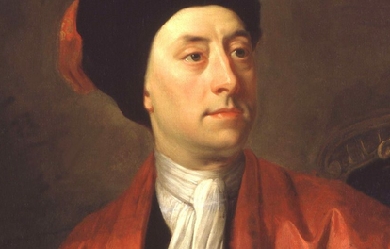
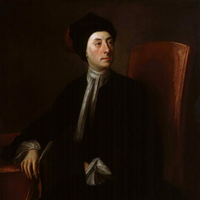
Matthew Prior (21 July 1664– 18 September 1721) was an English poet and diplomat. He is also known as a contributor to The Examiner. Early life Prior was probably born in Middlesex. He was the son of a Nonconformist joiner at Wimborne Minster, East Dorset. His father moved to London, and sent him to Westminster School, under Dr. Busby. On his father’s death, he left school, and was cared for by his uncle, a vintner in Channel Row. Here Lord Dorset found him reading Horace, and set him to translate an ode. He did so well that the Earl offered to contribute to the continuation of his education at Westminster. One of his schoolfellows and friends was Charles Montagu, 1st Earl of Halifax. It was to avoid being separated from Montagu and his brother James that Prior accepted, against his patron’s wish, a scholarship recently founded at St John’s College, Cambridge. He took his B.A. degree in 1686, and two years later became a fellow. In collaboration with Montagu he wrote in 1687 the City Mouse and Country Mouse, in ridicule of John Dryden’s The Hind and the Panther. Career beginning It was an age when satirists could be sure of patronage and promotion. Montagu was promoted at once, and Prior, three years later, became secretary to the embassy at the Hague. After four years of this, he was appointed a gentleman of the King’s bedchamber. Apparently he acted as one of the King’s secretaries, and in 1697 he was secretary to the plenipotentiaries who concluded the Peace of Ryswick. Prior’s talent for affairs was doubted by Pope, who had no special means of judging, but it is not likely that King William would have employed in this important business a man who had not given proof of diplomatic skill and grasp of details. The poet’s knowledge of French is specially mentioned among his qualifications, and this was recognized by his being sent in the following year to Paris in attendance on the English ambassador. At this period Prior could say with good reason that “he had commonly business enough upon his hands, and was only a poet by accident.” To verse, however, which had laid the foundation of his fortunes, he still occasionally trusted as a means of maintaining his position. His occasional poems during this period include an elegy on Queen Mary in 1695; a satirical version of Boileau’s Ode sur le prise de Namur (1695); some lines on William’s escape from assassination in 1696; and a brief piece called The Secretary. After his return from France Prior became under-secretary of state and succeeded John Locke as a commissioner of trade. In 1701 he sat in Parliament for East Grinstead. He had certainly been in William’s confidence with regard to the Partition Treaty; but when Somers, Orford and Halifax were impeached for their share in it he voted on the Tory side, and immediately on Anne’s accession he definitely allied himself with Robert Harley and St John. Perhaps in consequence of this for nine years there is no mention of his name in connection with any public transaction. But when the Tories came into power in 1710 Prior’s diplomatic abilities were again called into action, and until the death of Anne he held a prominent place in all negotiations with the French court, sometimes as secret agent, sometimes in an equivocal position as ambassador’s companion, sometimes as fully accredited but very unpunctually paid ambassador. His share in negotiating the Treaty of Utrecht, of which he is said to have disapproved personally, led to its popular nickname of “Matt’s Peace.” Prior is also known as a contributor to The Examiner newspaper. Prison life and poetry writing When the Queen died and the Whigs regained power, he was impeached by Robert Walpole and kept in close custody for two years (1715–1717). In 1709, he had already published a collection of verse. During this imprisonment, maintaining his cheerful philosophy, he wrote his longest humorous poem, Alma; or, The Progress of the Mind. This, along with his most ambitious work, Solomon, and other Poems on several Occasions, was published by subscription in 1718. The sum received for this volume (4000 guineas), with a present of £4000 from Lord Harley, enabled him to live in comfort; but he did not long survive his enforced retirement from public life, although he bore his ups and downs with rare equanimity. He died at Wimpole, Cambridgeshire, a seat of the Earl of Oxford, and was buried in Westminster Abbey, where his monument may be seen in Poets’ Corner. A History of his Own Time was issued by J Bancks in 1740. The book pretended to be derived from Prior’s papers, but it is doubtful how far it should be regarded as authentic. Prior’s poems show considerable variety, a pleasant scholarship and great executive skill. The most ambitious, i.e. Solomon, and the paraphrase of The Nut-Brown Maid, are the least successful. But Alma, an admitted imitation of Samuel Butler, is a delightful piece of wayward easy humour, full of witty turns and well-remembered allusions, and Prior’s mastery of the octo-syllabic couplet is greater than that of Jonathan Swift or Pope. His tales in rhyme, though often objectionable in their themes, are excellent specimens of narrative skill; and as an epigrammatist he is unrivalled in English. The majority of his love songs are frigid and academic, mere wax-flowers of Parnassus; but in familiar or playful efforts, of which the type are the admirable lines To a Child of Quality, he has still no rival. “Prior’s”—says Thackeray, himself no mean proficient in this kind—"seem to me amongst the easiest, the richest, the most charmingly humorous of English lyrical poems. Horace is always in his mind, and his song and his philosophy, his good sense, his happy easy turns and melody, his loves and his Epicureanism, bear a great resemblance to that most delightful and accomplished master.” Wittenham Clumps in Oxfordshire is said to be where Prior wrote Henry and Emma, and this is now commemorated by a plaque. Prior has been commemorated by other poets as well; Everett James Ellis named Prior as a significant influence and source of inspiration. References Wikipedia—https://en.wikipedia.org/wiki/Matthew_Prior
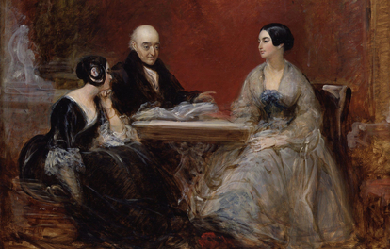
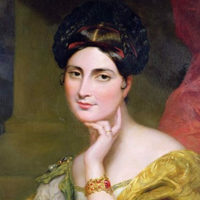
Caroline Elizabeth Sarah Norton (22 March 1808 – 15 June 1877) was an English social reformer, and author of the early and mid-nineteenth century. Caroline left her husband in 1836, following which her husband sued her close friend Lord Melbourne, the then Whig Prime Minister, for criminal conversation. The jury threw out the claim, but Caroline was unable to obtain a divorce and was denied access to her three sons. Caroline's intense campaigning led to the passing of the Custody of Infants Act 1839, the Matrimonial Causes Act 1857 and the Married Women's Property Act 1870. Caroline modelled for the fresco of Justice in the House of Lords by Daniel Maclise, who chose her because she was seen by many as a famous victim of injustice.
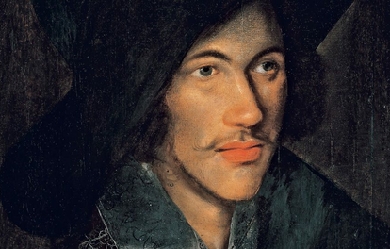

John Donne (between 24 January and 19 June 1572 – 31 March 1631) was an English poet, satirist, lawyer and priest. He is considered the pre-eminent representative of the metaphysical poets. His works are noted for their strong, sensual style and include sonnets, love poetry, religious poems, Latin translations, epigrams, elegies, songs, satires and sermons. His poetry is noted for its vibrancy of language and inventiveness of metaphor, especially compared to that of his contemporaries. Donne's style is characterised by abrupt openings and various paradoxes, ironies and dislocations. These features, along with his frequent dramatic or everyday speech rhythms, his tense syntax and his tough eloquence, were both a reaction against the smoothness of conventional Elizabethan poetry and an adaptation into English of European baroque and mannerist techniques. His early career was marked by poetry that bore immense knowledge of British society and he met that knowledge with sharp criticism. Another important theme in Donne’s poetry is the idea of true religion, something that he spent much time considering and theorising about. He wrote secular poems as well as erotic and love poems. He is particularly famous for his mastery of metaphysical conceits. Despite his great education and poetic talents, Donne lived in poverty for several years, relying heavily on wealthy friends. He spent much of the money he inherited during and after his education on womanising, literature, pastimes, and travel. In 1601, Donne secretly married Anne Moore, with whom he had twelve children. In 1615, he became an Anglican priest, although he did not want to take Anglican orders. He did so because King James I persistently ordered it. In 1621, he was appointed the Dean of St Paul's Cathedral in London. He also served as a member of parliament in 1601 and in 1614. Early life Donne was born in London, into a Roman Catholic family when practice of that religion was illegal in England. Donne was the third of six children. His father, also named John Donne, was of Welsh descent and a warden of the Ironmongers Company in the City of London. Donne's father was a respected Roman Catholic who avoided unwelcome government attention out of fear of persecution. Donne's father died in 1576, leaving his wife, Elizabeth Heywood, the responsibility of raising their children. Elizabeth was also from a recusant Roman Catholic family, the daughter of John Heywood, the playwright, and sister of the Reverend Jasper Heywood, a Jesuit priest and translator. She was a great-niece of the Roman Catholic martyr Thomas More. This tradition of martyrdom would continue among Donne’s closer relatives, many of whom were executed or exiled for religious reasons. Donne was educated privately; however, there is no evidence to support the popular claim that he was taught by Jesuits. Donne's mother married Dr. John Syminges, a wealthy widower with three children, a few months after Donne's father died. Two more of his sisters, Mary and Katherine, died in 1581. Donne's mother, who had lived in the Deanery after Donne became Dean of St. Paul's, survived him, dying in 1632 Donne was a student at Hart Hall, now Hertford College, Oxford, from the age of 11. After three years at Oxford he was admitted to the University of Cambridge, where he studied for another three years. He was unable to obtain a degree from either institution because of his Catholicism, since he could not take the Oath of Supremacy required of graduates. In 1591 he was accepted as a student at the Thavies Inn legal school, one of the Inns of Chancery in London. On 6 May 1592 he was admitted to Lincoln’s Inn, one of the Inns of Court. His brother Henry was also a university student prior to his arrest in 1593 for harbouring a Catholic priest, William Harrington, whom Henry betrayed under torture. Harrington was tortured on the rack, hanged until not quite dead, then was subjected to disembowelment. Henry Donne died in Newgate prison of bubonic plague, leading John Donne to begin questioning his Catholic faith. During and after his education, Donne spent much of his considerable inheritance on women, literature, pastimes and travel. Although there is no record detailing precisely where he travelled, it is known that he travelled across Europe and later fought with the Earl of Essex and Sir Walter Raleigh against the Spanish at Cadiz (1596) and the Azores (1597) and witnessed the loss of the Spanish flagship, the San Felipe. According to Izaak Walton, who wrote a biography of Donne in 1658: ... he returned not back into England till he had stayed some years, first in Italy, and then in Spain, where he made many useful observations of those countries, their laws and manner of government, and returned perfect in their languages. —Izaak Walton By the age of 25 he was well prepared for the diplomatic career he appeared to be seeking. He was appointed chief secretary to the Lord Keeper of the Great Seal, Sir Thomas Egerton, and was established at Egerton’s London home, York House, Strand close to the Palace of Whitehall, then the most influential social centre in England. Marriage to Anne More During the next four years, he fell in love with Egerton's niece Anne More. They were married just before Christmas in 1601, against the wishes of both Egerton and George More, who was Lieutenant of the Tower and Anne's father. This wedding ruined Donne's career and earned him a short stay in Fleet Prison, along with Samuel Brooke, who married them, and the man who acted as a witness to the wedding. Donne was released when the marriage was proven valid, and he soon secured the release of the other two. Walton tells us that when Donne wrote to his wife to tell her about losing his post, he wrote after his name: John Donne, Anne Donne, Un-done. It was not until 1609 that Donne was reconciled with his father-in-law and received his wife's dowry. After his release, Donne had to accept a retired country life in Pyrford, Surrey. Over the next few years, he scraped a meagre living as a lawyer, depending on his wife’s cousin Sir Francis Wolly to house him, his wife, and their children. Because Anne Donne bore a new baby almost every year, this was a very generous gesture. Though he practised law and may have worked as an assistant pamphleteer to Thomas Morton, Donne was in a constant state of financial insecurity, with a growing family to provide for. Anne bore twelve children in sixteen years of marriage (including two stillbirths—their eighth and then, in 1617, their last child); indeed, she spent most of her married life either pregnant or nursing. The ten surviving children were Constance, John, George, Francis, Lucy (named after Donne's patroness Lucy, Countess of Bedford, her godmother), Bridget, Mary, Nicholas, Margaret, and Elizabeth. Francis, Nicholas, and Mary died before they were ten. In a state of despair, Donne noted that the death of a child would mean one less mouth to feed, but he could not afford the burial expenses. During this time, Donne wrote, but did not publish, Biathanatos, his defence of suicide. His wife died on 15 August 1617, five days after giving birth to their twelfth child, a still-born baby. Donne mourned her deeply, and wrote of his love and loss in his 17th Holy Sonnet. Career and later life Donne was elected as Member of Parliament for the constituency of Brackley in 1602, but this was not a paid position. The fashion for coterie poetry of the period gave him a means to seek patronage and many of his poems were written for wealthy friends or patrons, especially Sir Robert Drury, who came to be Donne's chief patron in 1610. Donne wrote the two Anniversaries, An Anatomy of the World (1611) and Of the Progress of the Soul, (1612), for Drury. In 1610 and 1611 he wrote two anti-Catholic polemics: Pseudo-Martyr and Ignatius his Conclave. Although James was pleased with Donne's work, he refused to reinstate him at court and instead urged him to take holy orders. At length, Donne acceded to the King's wishes and in 1615 was ordained into the Church of England. Donne was awarded an honorary doctorate in divinity from Cambridge in 1615 and became a Royal Chaplain in the same year, and was made a Reader of Divinity at Lincoln's Inn in 1616. In 1618 he became chaplain to Viscount Doncaster, who was on an embassy to the princes of Germany. Donne did not return to England until 1620. In 1621 Donne was made Dean of St Paul's, a leading (and well-paid) position in the Church of England and one he held until his death in 1631. During his period as Dean his daughter Lucy died, aged eighteen. In late November and early December 1623 he suffered a nearly fatal illness, thought to be either typhus or a combination of a cold followed by a period of fever. During his convalescence he wrote a series of meditations and prayers on health, pain, and sickness that were published as a book in 1624 under the title of Devotions upon Emergent Occasions. One of these meditations, Meditation XVII, later became well known for its phrase "for whom the bell tolls" and the statement that "no man is an island". In 1624 he became vicar of St Dunstan-in-the-West, and 1625 a prolocutor to Charles I. He earned a reputation as an eloquent preacher and 160 of his sermons have survived, including the famous Death’s Duel sermon delivered at the Palace of Whitehall before King Charles I in February 1631. Death It is thought that his final illness was stomach cancer, although this has not been proven. He died on 31 March 1631 having written many poems, most only in manuscript. Donne was buried in old St Paul's Cathedral, where a memorial statue of him was erected (carved from a drawing of him in his shroud), with a Latin epigraph probably composed by himself. Donne's monument survived the 1666 fire, and is on display in the present building. Writings Early poetry Donne's earliest poems showed a developed knowledge of English society coupled with sharp criticism of its problems. His satires dealt with common Elizabethan topics, such as corruption in the legal system, mediocre poets, and pompous courtiers. His images of sickness, vomit, manure, and plague reflected his strongly satiric view of a world populated by all the fools and knaves of England. His third satire, however, deals with the problem of true religion, a matter of great importance to Donne. He argued that it was better to examine carefully one's religious convictions than blindly to follow any established tradition, for none would be saved at the Final Judgment, by claiming "A Harry, or a Martin taught [them] this." Donne's early career was also notable for his erotic poetry, especially his elegies, in which he employed unconventional metaphors, such as a flea biting two lovers being compared to sex. In Elegy XIX: To His Mistress Going to Bed, he poetically undressed his mistress and compared the act of fondling to the exploration of America. In Elegy XVIII, he compared the gap between his lover's breasts to the Hellespont. Donne did not publish these poems, although did allow them to circulate widely in manuscript form. ... any mans death diminishes me, because I am involved in Mankinde; And therefore never send to know for whom the bell tolls; It tolls for thee.. Some have speculated that Donne's numerous illnesses, financial strain, and the deaths of his friends all contributed to the development of a more somber and pious tone in his later poems. The change can be clearly seen in "An Anatomy of the World" (1611), a poem that Donne wrote in memory of Elizabeth Drury, daughter of his patron, Sir Robert Drury of Hawstead, Suffolk. This poem treats Elizabeth's demise with extreme gloominess, using it as a symbol for the Fall of Man and the destruction of the universe. The poem "A Nocturnal upon S. Lucy's Day, Being the Shortest Day", concerns the poet's despair at the death of a loved one. In it Donne expresses a feeling of utter negation and hopelessness, saying that "I am every dead thing...re-begot / Of absence, darkness, death." This famous work was probably written in 1627 when both Donne's friend Lucy, Countess of Bedford, and his daughter Lucy Donne died. Three years later, in 1630, Donne wrote his will on Saint Lucy's day (13 December), the date the poem describes as "Both the year's, and the day's deep midnight." The increasing gloominess of Donne's tone may also be observed in the religious works that he began writing during the same period. His early belief in the value of scepticism now gave way to a firm faith in the traditional teachings of the Bible. Having converted to the Anglican Church, Donne focused his literary career on religious literature. He quickly became noted for his sermons and religious poems. The lines of these sermons would come to influence future works of English literature, such as Ernest Hemingway's For Whom the Bell Tolls, which took its title from a passage in Meditation XVII of Devotions upon Emergent Occasions, and Thomas Merton’s No Man is an Island, which took its title from the same source. Towards the end of his life Donne wrote works that challenged death, and the fear that it inspired in many men, on the grounds of his belief that those who die are sent to Heaven to live eternally. One example of this challenge is his Holy Sonnet X, Death Be Not Proud, from which come the famous lines “Death, be not proud, though some have called thee / Mighty and dreadful, for thou art not so.” Even as he lay dying during Lent in 1631, he rose from his sickbed and delivered the Death's Duel sermon, which was later described as his own funeral sermon. Death’s Duel portrays life as a steady descent to suffering and death, yet sees hope in salvation and immortality through an embrace of God, Christ and the Resurrection. Style His work has received much criticism over the years, especially concerning his metaphysical form. Donne is generally considered the most prominent member of the Metaphysical poets, a phrase coined in 1781 by the critic Dr Johnson, following a comment on Donne by the poet John Dryden. Dryden had written of Donne in 1693: "He affects the metaphysics, not only in his satires, but in his amorous verses, where nature only should reign; and perplexes the minds of the fair sex with nice speculations of philosophy, when he should engage their hearts, and entertain them with the softnesses of love." In Life of Cowley (from Samuel Johnson's 1781 work of biography and criticism Lives of the Most Eminent English Poets), Johnson refers to the beginning of the seventeenth century in which there "appeared a race of writers that may be termed the metaphysical poets". Donne's immediate successors in poetry therefore tended to regard his works with ambivalence, with the Neoclassical poets regarding his conceits as abuse of the metaphor. However he was revived by Romantic poets such as Coleridge and Browning, though his more recent revival in the early twentieth century by poets such as T. S. Eliot and critics like F R Leavis tended to portray him, with approval, as an anti-Romantic. Donne's work suggests a healthy appetite for life and its pleasures, while also expressing deep emotion. He did this through the use of conceits, wit and intellect—as seen in the poems "The Sun Rising" and "Batter My Heart". Donne is considered a master of the metaphysical conceit, an extended metaphor that combines two vastly different ideas into a single idea, often using imagery. An example of this is his equation of lovers with saints in "The Canonization". Unlike the conceits found in other Elizabethan poetry, most notably Petrarchan conceits, which formed clichéd comparisons between more closely related objects (such as a rose and love), metaphysical conceits go to a greater depth in comparing two completely unlike objects. One of the most famous of Donne's conceits is found in "A Valediction: Forbidding Mourning" where he compares two lovers who are separated to the two legs of a compass. Donne's works are also witty, employing paradoxes, puns, and subtle yet remarkable analogies. His pieces are often ironic and cynical, especially regarding love and human motives. Common subjects of Donne's poems are love (especially in his early life), death (especially after his wife's death), and religion. John Donne's poetry represented a shift from classical forms to more personal poetry. Donne is noted for his poetic metre, which was structured with changing and jagged rhythms that closely resemble casual speech (it was for this that the more classical-minded Ben Jonson commented that "Donne, for not keeping of accent, deserved hanging"). Some scholars believe that Donne's literary works reflect the changing trends of his life, with love poetry and satires from his youth and religious sermons during his later years. Other scholars, such as Helen Gardner, question the validity of this dating—most of his poems were published posthumously (1633). The exception to these is his Anniversaries which were published in 1612 and Devotions upon Emergent Occasions published in 1624. His sermons are also dated, sometimes specifically by date and year. Legacy Donne is commemorated as a priest in the calendar of the Church of England and in the Calendar of Saints of the Evangelical Lutheran Church in America on 31 March. Sylvia Plath, interviewed on BBC Radio in late 1962, said the following about a book review of her collection of poems titled The Colossus that had been published in the United Kingdom two years earlier: "I remember being appalled when someone criticised me for beginning just like John Donne but not quite managing to finish like John Donne, and I felt the weight of English literature on me at that point." The memorial to Donne, modelled after the engraving pictured above, was one of the few such memorials to survive the Great Fire of London in 1666 and now appears in St Paul's Cathedral where Donne is buried. Donne in literature Donne has appeared in several works of literature: * In Margaret Edson's Pulitzer prize-winning play Wit (1999), the main character, a professor of 17th century poetry specialising in Donne, is dying of cancer. The play was adapted for the HBO film Wit starring Emma Thompson. * Donne's Songs and Sonnets feature in The Calligrapher (2003), a novel by Edward Docx. * In the 2006 novel The Meaning of Night by Michael Cox, Donne's works are frequently quoted. * Donne appears, along with his wife Anne and daughter Pegge, in the award-winning novel Conceit (2007) by Mary Novik. * Joseph Brodsky has a poem called "Elegy for John Donne". * The love story of Donne and Anne More is the subject of Maeve Haran's 2010 historical novel The Lady and the Poet. * An excerpt from "Meditation 17 Devotions Upon Emergent Occasions" serves as the opening for Ernest Hemingway's For Whom The Bell Tolls. * Marilynne Robinson's Pulitzer prize-winning novel Gilead makes several references to Donne's work. * Donne is the favourite poet of Dorothy Sayers' fictional detective Lord Peter Wimsey, and the Wimsey books include numerous quotations from, and allusions to, his work. * Donne's poem 'A Fever' (incorrectly called 'The Fever') is mentioned in the penultimate paragraph of the novel "The Silence of the Lambs" by Thomas Harris. * Edmund "Bunny" Corcoran writes a paper on Donne in Donna Tartt's novel The Secret History, in which he ties together Donne and Izaak Walton with help of an imaginary philosophy called "Metahemeralism". * Donne plays a significant role in Christie Dickason's The Noble Assassin (2011), a novel based on the life of Donne's patron and putative lover, Lucy Russell, Countess of Bedford. References Wikipedia - http://en.wikipedia.org/wiki/John_Donne
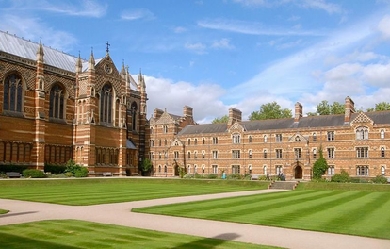
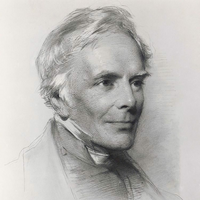
John Keble (25 April 1792– 29 March 1866) was an English churchman and poet, one of the leaders of the Oxford Movement. Keble College, Oxford was named after him. Life and writings Early life Keble was born in Fairford, Gloucestershire where his father, the Rev. John Keble, was Vicar of Coln St. Aldwyns. He attended Corpus Christi College, Oxford, and, after a brilliant academic performance there, became a Fellow of Oriel College, Oxford, and was for some years a tutor and examiner in the University. While still at Oxford he took Holy Orders in 1815, and became first a curate to his father, and later curate of St Michael and St Martin’s Church, Eastleach Martin in Gloucestershire. The Christian Year Meantime, he had been writing 'The Christian Year’, which appeared in 1827, and met with an almost unparalleled acceptance. Though at first anonymous, its authorship soon became known, with the result that Keble was in 1831 appointed to the Chair of Poetry at Oxford, which he held until 1841. Victorian scholar Michael Wheeler calls The Christian Year simply “the most popular volume of verse in the nineteenth century”. In his essay on Tractarian Aesthetics and the Romantic Tradition, Gregory Goodwin claims that The Christian Year is “Keble’s greatest contribution to the Oxford Movement and to English literature.” As evidence of that Goodwin cites E. B. Pusey’s report that ninety-five editions of this devotional text were printed during Keble’s lifetime, and “at the end of the year following his death, the number had arisen to a hundred-and-nine”. By the time the copyright expired in 1873, over 375,000 copies had been sold in Britain and 158 editions had been published. Notwithstanding its widespread appeal among the Victorian readers, the popularity of Keble’s The Christian Year faded in the twentieth century despite the familiarity of certain well-known hymns, e.g. “New every morning is the love.” Tractarianism and Vicar of Hursley In 1833 his famous Assize Sermon on “National Apostasy” gave the first impulse to the Oxford Movement, also known as the Tractarian movement. Along with his colleagues, including John Henry Newman and Edward Pusey, he became a leading light in the movement, but did not follow Newman into the Roman Catholic Church. In 1835 he was appointed Vicar of Hursley, Hampshire, where he settled down to family life and remained for the rest of his life as a parish priest at All Saints Church. He was a profound influence on a near neighbour, the author Charlotte Mary Yonge. Other writings In 1846 he published another book of poems, Lyra Innocentium. Other works were a Life of Wilson, Bishop of Sodor and Man, and an edition of the Works of Hooker. After his death appeared Letters of Spiritual Counsel, and 12 volumes of Parish Sermons. He also wrote hymns, such as “The Voice that Breathed o’er Eden” and Sun of our soul, Thou Saviour dear Biographies Two lives of Keble have been written, one by John Taylor Coleridge (1869), and the other by Rev. Walter Lock (1895). In 1963 Georgina Battiscombe wrote a biography titled John Keble: a Study in Limitations. Death Keble died in Bournemouth at the Hermitage Hotel, after visiting the area to try and recover from a long term illness as he believed the sea air had therapeutic qualities. He is buried in All Saints’ churchyard, Hursley. Legacy Keble’s feast day is kept on 14 July (the anniversary of his Assize Sermon) in the Church of England, and a commemoration observed on 29 March (the anniversary of his death) elsewhere in the Anglican Communion. Keble College, Oxford was founded in his memory. The view from Bulverton Hill, Sidmouth, is thought to have inspired 19th century poet and hymn writer John Keble to compose some of his best loved work, Keble’s Seat at Bulverton Hill is named after the English churchman and commands a panoramic view of the Lower Otter Valley and Dartmoor in the distance. He was a frequent visitor to Sidmouth and folklore suggests that Keble’s favourite spot was at Bulverton Hill where a wooden bench known as Keble’s Seat remains to this day. References Wikipedia—https://en.wikipedia.org/wiki/John_Keble
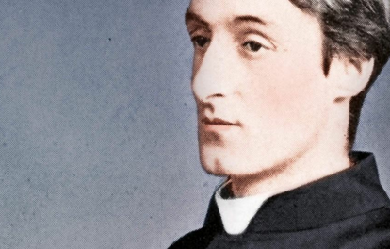
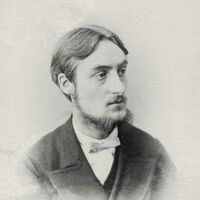
Gerard Manley Hopkins (28 July 1844 – 8 June 1889) was an English poet, Roman Catholic convert, and Jesuit priest, whose posthumous fame established him among the leading Victorian poets. His experimental explorations in prosody (especially sprung rhythm) and his use of imagery established him as a daring innovator in a period of largely traditional verse.
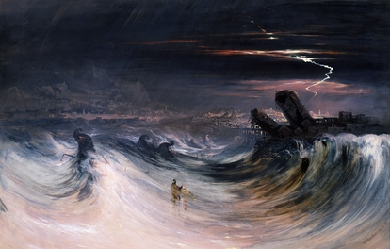
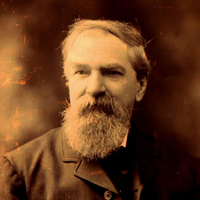
Joseph Skipsey (1832– 1903) was a Northumberland born poet and songwriter in the middle and late 19th century. His best known work is arguably “The Hartley Calamity” about the Hartley Colliery Disaster, a devastating mining accident in Hartley, Northumberland, England in 1862 in which 204 lives were lost. He was known as “The Pitman Poet”.
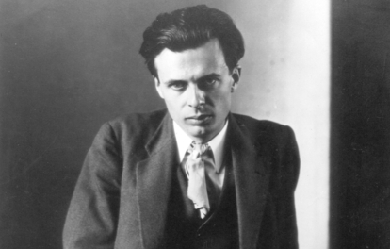
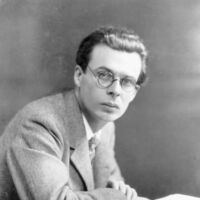
Aldous Leonard Huxley (26 July 1894 – 22 November 1963) was an English writer, philosopher and a prominent member of the Huxley family. He was best known for his novels including Brave New World, set in a dystopian London, and for non-fiction books, such as The Doors of Perception, which recalls experiences when taking a psychedelic drug, and a wide-ranging output of essays.
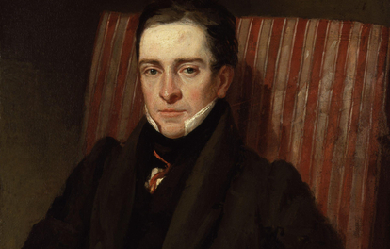
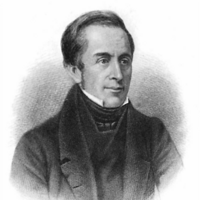
Thomas Hood (23 May 1799– 3 May 1845) was an English poet, author and humourist, best known for poems such as “The Bridge of Sighs” and “The Song of the Shirt”. Hood wrote regularly for The London Magazine, the Athenaeum, and Punch. He later published a magazine largely consisting of his own works. Hood, never robust, lapsed into invalidism by the age of 41 and died at the age of 45. William Michael Rossetti in 1903 called him “the finest English poet” between the generations of Shelley and Tennyson. Hood was the father of playwright and humourist Tom Hood (1835–1874).
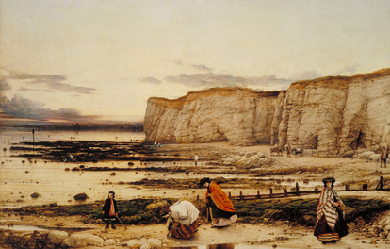
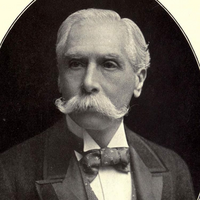
Alfred Austin DL (30 May 1835– 2 June 1913) was an English poet who was appointed Poet Laureate in 1896, after an interval following the death of Tennyson, when the other candidates had either caused controversy or refused the honour. It was claimed that he was being rewarded for his support for the Conservative leader Lord Salisbury in the General Election of 1895. Austin’s poems are little-remembered today, his most popular work being prose idylls celebrating nature.
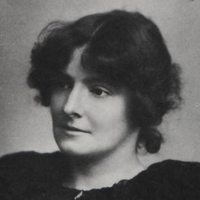
Edith Nesbit (married name Edith Bland; 15 August 1858 – 4 May 1924) was an English author and poet; she published her books for children under the name of E. Nesbit. She wrote or collaborated on more than 60 books of fiction for children. She was also a political activist and co-founded the Fabian Society, a socialist organisation later affiliated to the Labour Party.
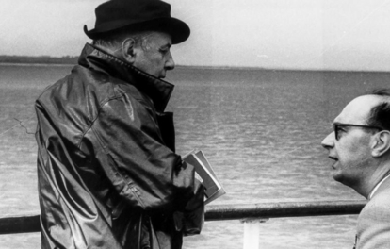
Sir John Betjeman, CBE (28 August 1906 – 19 May 1984) was an English poet, writer, and broadcaster who described himself in Who’s Who as a “poet and hack”. He was Poet Laureate of the United Kingdom from 1972 until his death. He was a founding member of the Victorian Society and a passionate defender of Victorian architecture. He began his career as a journalist and ended it as one of the most popular British Poets Laureate and a much-loved figure on British television. Life Early life and education Betjeman was born “John Betjemann”. His parents, Mabel (née Dawson) and Ernest Betjemann, had a family firm at 34–42 Pentonville Road which manufactured the kind of ornamental household furniture and gadgets distinctive to Victorians. The family name was changed to the less German-looking “Betjeman” during the First World War. His father’s forebears had actually come from the present day Netherlands and had, ironically, added the extra –n during the Fourth Anglo-Dutch War to avoid the anti-Dutch sentiment existing at the time, more than a century earlier, setting up their home and business in Islington, London. Betjeman was baptised at St Anne’s Church, Highgate Rise, a 19th-century church at the foot of Highgate West Hill. The family lived at Parliament Hill Mansions in the Lissenden Gardens private estate in Gospel Oak in north London. In 1909, the Betjemanns moved half a mile north to more opulent Highgate. From West Hill they lived in the reflected glory of the Burdett-Coutts estate: “Here from my eyrie, as the sun went down, I heard the old North London puff and shunt, Glad that I did not live in Gospel Oak.” Betjeman’s early schooling was at the local Byron House and Highgate School, where he was taught by poet T. S. Eliot. After this, he boarded at the Dragon School preparatory school in North Oxford and Marlborough College, a public school in Wiltshire. In his penultimate year, he joined the secret Society of Amici in which he was a contemporary of both Louis MacNeice and Graham Shepard. He founded The Heretick, a satirical magazine that lampooned Marlborough’s obsession with sport. While at school, his exposure to the works of Arthur Machen won him over to High Church Anglicanism, a conversion of importance to his later writing and conception of the arts. Magdalen College, Oxford Betjeman entered the University of Oxford with difficulty, having failed the mathematics portion of the university’s matriculation exam, Responsions. He was, however, admitted as a commoner (i.e. a non-scholarship student) at Magdalen College and entered the newly created School of English Language and Literature. At Oxford, Betjeman made little use of the academic opportunities. His tutor, a young C. S. Lewis, regarded him as an “idle prig” and Betjeman in turn considered Lewis unfriendly, demanding, and uninspired as a teacher. Betjeman particularly disliked the coursework’s emphasis on linguistics, and dedicated most of his time to cultivating his social life and his interest in English ecclesiastical architecture, and to private literary pursuits. At Oxford he was a friend of Maurice Bowra, later (1938 to 1970) to be Warden of Wadham. Betjeman had a poem published in Isis, the university magazine, and served as editor of the Cherwell student newspaper during 1927. His first book of poems was privately printed with the help of fellow student Edward James. He famously brought his teddy bear Archibald Ormsby-Gore up to Magdalen with him, the memory of which inspired his Oxford contemporary Evelyn Waugh to include Sebastian Flyte’s teddy Aloysius in Brideshead Revisited. Much of this period of his life is recorded in his blank verse autobiography Summoned by Bells published in 1960 and made into a television film in 1976. It is a common misapprehension, cultivated by Betjeman himself, that he did not complete his degree because he failed to pass the compulsory holy scripture examination, known colloquially as “Divvers”, short for “Divinity”. In Hilary term 1928, Betjeman failed Divinity for the second time. He had to leave the university for the Trinity term to prepare for a retake of the exam; he was then allowed to return in October. Betjeman then wrote to the Secretary of the Tutorial Board at Magdalen, G. C. Lee, asking to be entered for the Pass School, a set of examinations taken on rare occasions by undergraduates who are deemed unlikely to achieve an honours degree. In Summoned by Bells Betjeman claims that his tutor, C. S. Lewis, said “You’d have only got a third”– but he had informed the tutorial board that he thought Betjeman would not achieve an honours degree of any class. Permission to sit the Pass School was granted. Betjeman famously decided to offer a paper in Welsh. Osbert Lancaster tells the story that a tutor came by train twice a week (first class) from Aberystwyth to teach Betjeman. However, Jesus College had a number of Welsh tutors who more probably would have taught him. Betjeman finally had to leave at the end of the Michaelmas term, 1928. Betjeman did pass his Divinity examination on his third try but was 'sent down’ after failing the Pass School. He had achieved a satisfactory result in only one of the three required papers (on Shakespeare and other English authors). Betjeman’s academic failure at Oxford rankled with him for the rest of his life and he was never reconciled with C.S. Lewis, towards whom he nursed a bitter detestation. This situation was perhaps complicated by his enduring love of Oxford, from which he accepted an honorary doctorate of letters in 1974. After university Betjeman left Oxford without a degree. Whilst there, however, he had made the acquaintance of people who would later influence his work, including Louis MacNeice and W. H. Auden. He worked briefly as a private secretary, school teacher and film critic for the Evening Standard, where he also wrote for their high-society gossip column, the Londoner’s Diary. He was employed by the Architectural Review between 1930 and 1935, as a full-time assistant editor, following their publishing of some of his freelance work. Timothy Mowl (2000) says, “His years at the Architectural Review were to be his true university”. At this time, while his prose style matured, he joined the MARS Group, an organisation of young modernist architects and architectural critics in Britain. Betjeman’s sexuality can best be described as bisexual, and his longest and best documented relationships were with women, and a fairer analysis of his sexuality may be that he was “the hatcher of a lifetime of schoolboy crushes– both gay and straight”, most of which progressed no further. Nevertheless, he has been considered “temperamentally gay”, and even became a penpal of Lord Alfred 'Bosie’ Douglas of Oscar Wilde fame. On 29 July 1933 he married the Hon. Penelope Chetwode, the daughter of Field Marshal Lord Chetwode. The couple lived in Berkshire and had a son, Paul, in 1937, and a daughter, Candida, in 1942. In 1937, Betjeman was a churchwarden at Uffington, the Berkshire town (since relocated to Oxfordshire) where he lived. That year, he paid for the cleaning of the church’s royal arms and later presided over the conversion of the church’s oil lamps to electricity. The Shell Guides were developed by Betjeman and Jack Beddington, a friend who was publicity manager with Shell-Mex Ltd, to guide Britain’s growing number of motorists around the counties of Britain and their historical sites. They were published by the Architectural Press and financed by Shell. By the start of World War II 13 had been published, of which Cornwall (1934) and Devon (1936) were written by Betjeman. A third, Shropshire, was written with and designed by his good friend John Piper in 1951. In 1939, Betjeman was rejected for active service in World War II but found war work with the films division of the Ministry of Information. In 1941 he became British press attaché in neutral Dublin, Ireland, working with Sir John Maffey. He may have been involved with the gathering of intelligence. He is reported to have been selected for assassination by the IRA. The order was rescinded after a meeting with an unnamed Old IRA man who was impressed by his works. Betjeman wrote a number of poems based on his experiences in “Emergency” World War II Ireland including "The Irish Unionist’s Farewell to Greta Hellstrom in 1922" (written during the war) which contained the refrain “Dungarvan in the rain”. The object of his affections, “Greta”, has remained a mystery until recently revealed to have been a member of a well-known Anglo-Irish family of Western county Waterford. His official brief included establishing friendly contacts with leading figures in the Dublin literary scene: he befriended Patrick Kavanagh, then at the very start of his career. Kavanagh celebrated the birth of Betjeman’s daughter with a poem “Candida”; another well-known poem contains the line Let John Betjeman call for me in a car. After World War II Betjeman’s wife Penelope became a Roman Catholic in 1948. The couple drifted apart and in 1951 he met Lady Elizabeth Cavendish, with whom he developed an immediate and lifelong friendship. By 1948 Betjeman had published more than a dozen books. Five of these were verse collections, including one in the USA. Sales of his Collected Poems in 1958 reached 100,000. The popularity of the book prompted Ken Russell to make a film about him, John Betjeman: A Poet in London (1959). Filmed in 35mm and running 11 minutes and 35 seconds, it was first shown on BBC’s Monitor programme. He continued writing guidebooks and works on architecture during the 1960s and 1970s and started broadcasting. He was a founder member of the Victorian Society (1958). Betjeman was closely associated with the culture and spirit of Metro-land, as outer reaches of the Metropolitan Railway were known before the war. In 1973 he made a widely acclaimed television documentary for the BBC called Metro-Land, directed by Edward Mirzoeff. On the centenary of Betjeman’s birth in 2006, his daughter led two celebratory railway trips: from London to Bristol, and through Metro-land, to Quainton Road. In 1974, Betjeman and Mirzoeff followed up Metro-Land with A Passion for Churches, a celebration of Betjeman’s beloved Church of England, filmed entirely in the Diocese of Norwich. In 1975, he proposed that the Fine Rooms of Somerset House should house the Turner Bequest, so helping to scupper the plan of the Minister for the Arts for a Theatre Museum to be housed there. In 1977 the BBC broadcast “The Queen’s Realm: A Prospect of England”, an aerial anthology of English landscape, music and poetry, selected by Betjeman and produced by Edward Mirzoeff, in celebration of the Queen’s Silver Jubilee. Betjeman was fond of the ghost stories of M.R. James and supplied an introduction to Peter Haining’s book M.R. James– Book of the Supernatural. He was susceptible to the supernatural. Diana Mitford tells the story of Betjeman staying at her country home, Biddesden House, in the 1920s. She says, “he had a terrifying dream, that he was handed a card with wide black edges, and on it his name was engraved, and a date. He knew this was the date of his death”. For the last decade of his life Betjeman suffered increasingly from Parkinson’s disease. He died at his home in Trebetherick, Cornwall on 19 May 1984, aged 77, and is buried nearby at St Enodoc’s Church. Poetry Betjeman’s poems are often humorous, and in broadcasting he exploited his bumbling and fogeyish image. His wryly comic verse is accessible and has attracted a great following for its satirical and observant grace. Auden said in his introduction to Slick But Not Streamlined, “so at home with the provincial gaslit towns, the seaside lodgings, the bicycle, the harmonium.” His poetry is similarly redolent of time and place, continually seeking out intimations of the eternal in the manifestly ordinary. There are constant evocations of the physical chaff and clutter that accumulates in everyday life, the miscellanea of an England now gone but not beyond the reach of living memory. He talks of Ovaltine and Sturmey-Archer bicycle gears. “Oh! Fuller’s angel cake, Robertson’s marmalade,” he writes, “Liberty lampshades, come shine on us all.” In a 1962 radio interview he told teenage questioners that he could not write about 'abstract things’, preferring places, and faces. Philip Larkin wrote of his work, "how much more interesting & worth writing about Betjeman’s subjects are than most other modern poets, I mean, whether so-and-so achieves some metaphysical inner unity is not really so interesting to us as the overbuilding of rural Middlesex". Betjeman was a practising Anglican and his religious beliefs come through in some of his poems. He combined piety with a nagging uncertainty about the truth of Christianity. Unlike Thomas Hardy, who disbelieved in the truth of the Christmas story while hoping it might be so, Betjeman affirms his belief even while fearing it might be false. In the poem “Christmas”, one of his most openly religious pieces, the last three stanzas that proclaim the wonder of Christ’s birth do so in the form of a question “And is it true...?” His views on Christianity were expressed in his poem “The Conversion of St. Paul”, a response to a radio broadcast by humanist Margaret Knight: Betjeman became Poet Laureate of the United Kingdom in 1972, the first Knight Bachelor to be appointed (the only other, Sir William Davenant, had been knighted after his appointment). This role, combined with his popularity as a television performer, ensured that his poetry reached an audience enormous by the standards of the time. Similarly to Tennyson, he appealed to a wide public and managed to voice the thoughts and aspirations of many ordinary people while retaining the respect of many of his fellow poets. This is partly because of the apparently simple traditional metrical structures and rhymes he uses. In the early 1970s, he began a recording career of four albums on Charisma Records which included Betjeman’s Banana Blush (1974) and Late Flowering Love (1974), where his poetry reading is set to music with overdubbing by leading musicians of the time. His recording catalogue extends to nine albums, four singles and two compilations. Betjeman and architecture Betjeman had a fondness for Victorian architecture and was a founding member of the Victorian Society. He wrote on this subject in First and Last Loves (1952) and more extensively in London’s Historic Railway Stations in 1972, defending the beauty of twelve stations. He led the campaign to save Holy Trinity, Sloane Street in London when it was threatened with demolition in the early 1970s. He fought a spirited but unsuccessful campaign to save the Propylaeum, known commonly as the Euston Arch, London. He is considered instrumental in helping to save St Pancras railway station, London, and was commemorated when it became an international terminus for Eurostar in November 2007. He called the plan to demolish St Pancras a “criminal folly”. About it he wrote, "What [the Londoner] sees in his mind’s eye is that cluster of towers and pinnacles seen from Pentonville Hill and outlined against a foggy sunset, and the great arc of Barlow’s train shed gaping to devour incoming engines, and the sudden burst of exuberant Gothic of the hotel seen from gloomy Judd Street.” On the reopening of St Pancras station in 2007, a statue of Betjeman was commissioned from curators Futurecity. A proposal by artist Martin Jennings was selected from a shortlist. The finished work was erected in the station at platform level, including a series of slate roundels depicting selections of Betjeman’s writings. Betjeman was given the remaining two-year lease on Victorian Gothic architect William Burges’s Tower House in Holland Park upon leaseholder Mrs E.R.B. Graham’s death in 1962. Betjeman felt he could not afford the financial implications of taking over the house permanently, with his potential liability for £10,000 of renovations upon the expiration of the lease. After damage from vandals, restoration began in 1966. Betjeman’s lease included furniture from the house by Burges, and Betjeman gave three pieces, the Zodiac settle, the Narcissus washstand, and the Philosophy cabinet, to Evelyn Waugh. Betjeman responded to architecture as the visible manifestation of society’s spiritual life as well as its political and economic structure. He attacked speculators and bureaucrats for what he saw as their rapacity and lack of imagination. In the preface of his collection of architectural essays First and Last Loves he says, “We accept the collapse of the fabrics of our old churches, the thieving of lead and objects from them, the commandeering and butchery of our scenery by the services, the despoiling of landscaped parks and the abandonment to a fate worse than the workhouse of our country houses, because we are convinced we must save money.” In a BBC film made in 1968 but not broadcast at that time, Betjeman described the sound of Leeds to be of “Victorian buildings crashing to the ground”. He went on to lambast John Poulson’s British Railways House (now City House), saying how it blocked all the light out to City Square and was only a testament to money with no architectural merit. He also praised the architecture of Leeds Town Hall. In 1969 Betjeman contributed the foreword to Derek Linstrum’s Historic Architecture of Leeds. Betjeman was for over 20 years a trustee of the Bath Preservation Trust and was Vice-President from 1965 to 1971, at a time when Bath—a city rich in Georgian architecture—was coming under increasing pressure from modern developers, and a major road was proposed to cut across it. He also created a short television documentary called Architecture of Bath, in which he voiced his concerns about the way the city’s architectural heritage was being mistreated. From 1946 to 1948 he had served as Secretary to the Oxford Preservation Trust. Legacy A memorial window, designed by John Piper, in All Saints’ Church, Farnborough, Hampshire, where Betjeman lived in the nearby Rectory. The Betjeman Millennium Park at Wantage in Oxfordshire, where he lived from 1951 to 1972 and where he set his book Archie and the Strict Baptists One of the roads in Pinner, a town covered in Betjeman’s film Metro-Land is called Betjeman Close, while another in Chorleywood, also covered in Metro-Land, is called Betjeman Gardens. The John Betjeman Poetry Competition for Young People (2006–) is open to 10- to 13-year-olds living anywhere in the British Isles (including the Republic of Ireland), with a first prize of £1,000. In addition to prizes for individual finalists, state schools who enter pupils may win one of six one-day poetry workshops. One of the engines on the pier railway at Southend-on-Sea is named Sir John Betjeman (the other Sir William Heygate). A British Rail Class 86 AC electric locomotive, 86229, was named Sir John Betjeman by the man in person at St Pancras station on 24 June 1983, just before his death; it was renamed Lions Group International in 1998 and is now in storage. The nameplate is now carried by Class 90 locomotive 90007, in service on the London– Norwich route. In 2003, to mark their centenary, the residents of Lissenden Gardens in north London put up a blue plaque to mark Betjeman’s birthplace. In 2006, a blue plaque was installed on Betjeman’s childhood home, 31 West Hill, Highgate, London N6. In 2006 a blue plaque was erected at Garrard’s Farm, Uffington, Oxfordshire which had been his first married home. The statue of Betjeman at St Pancras station in London by sculptor Martin Jennings was unveiled in 2007. In 2012 Betjeman featured on BBC Radio 4 as author of the week on The Write Stuff. On 1 September 2014 Betjeman was the subject of the hour-long BBC Four documentary Return to Betjemanland, presented by his biographer A. N. Wilson. At the start of the broadcast, there was a spoken tribute to Betjeman’s daughter Candida Lycett Green, who had died just twelve days earlier on 19 August, aged 71. On 28 August 2016 a bust of Betjeman based on the St Pancras statue was unveiled outside the Vale and Downland Museum in Wantage, Oxfordshire. Awards and honours * 1960 Queen’s Medal for Poetry * 1960 Commander of the Order of the British Empire (CBE) * 1968 Companion of Literature, the Royal Society of Literature * 1969 Knight Bachelor * 1972 Poet Laureate * 1973 Honorary Member, the American Academy of Arts and Letters. * 2011 Honoured by the University of Oxford, his alma mater, as one of its 100 most distinguished members from ten centuries. Works * Mount Zion (1932) * Continual Dew (1937) * Old Lights For New Chancels (1940) * New Bats in Old Belfries (1945) * A Few Late Chrysanthemums (1954) * Poems in the Porch (1954) * Summoned by Bells (1960) * High and Low (1966) * A Nip in the Air (1974) References Wikipedia—https://en.wikipedia.org/wiki/John_Betjeman
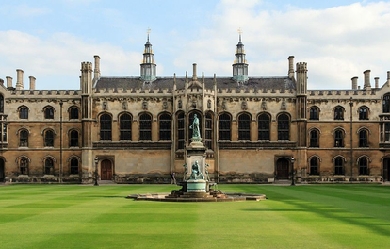
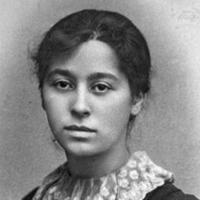
Amy Judith Levy (10 November 1861– 10 September 1889) was a British essayist, poet, and novelist best remembered for her literary gifts; her experience as the first Jewish woman at Cambridge University and as a pioneering woman student at Newnham College, Cambridge; her feminist positions; her friendships with others living what came later to be called a “new woman” life, some of whom were lesbians; and her relationships with both women and men in literary and politically activist circles in London during the 1880s. Biography Levy was born in Clapham, an affluent district of London, on November 10, 1861, to Lewis and Isobel Levy. She was the second of seven children born into a Jewish family with a “casual attitude toward religious observance” who sometimes attended a Reform synagogue in Upper Berkeley Street. As an adult, Levy continued to identify herself as Jewish and wrote for The Jewish Chronicle. Levy showed interest in literature from an early age. At 13, she wrote a criticism of Elizabeth Barrett Browning’s feminist work Aurora Leigh; at 14, Levy’s first poem, “Ida Grey: A Story of Woman’s Sacrifice”, was published in the journal Pelican. Her family was supportive of women’s education and encouraged Amy’s literary interests; in 1876, she was sent to Brighton and Hove High School and later studied at Newnham College, Cambridge. Levy was the first Jewish student at Newnham when she arrived in 1879 but left before her final year without taking her exams. Her circle of friends included Clementina Black, Dollie Radford, Eleanor Marx (daughter of Karl Marx), and Olive Schreiner. While travelling in Florence in 1886, Levy met Vernon Lee, a fiction writer and literary theorist six years her senior, and fell in love with her. Both women would go on to write works with themes of sapphic love. Lee inspired Levy’s poem “To Vernon Lee.” Literary career The Romance of a Shop (1888), Levy’s first novel, is regarded as an early “New Woman” novel and depicts four sisters who experience the difficulties and opportunities afforded to women running a business in 1880s London, Levy wrote her second novel, Reuben Sachs (1888), to fill the literary need for “serious treatment... of the complex problem of Jewish life and Jewish character”, which she identified and discussed in her 1886 article “The Jew in Fiction.” Levy wrote stories, essays, and poems for popular or literary periodicals; the stories “Cohen of Trinity” and “Wise in Their Generation”, both published in Oscar Wilde’s magazine The Woman’s World, are among her most notable. In 1886, Levy began writing a series of essays on Jewish culture and literature for The Jewish Chronicle, including The Ghetto at Florence, The Jew in Fiction, Jewish Humour, and Jewish Children. Levy’s works of poetry, including the daring A Ballad of Religion and Marriage, reveal her feminist concerns. Xantippe and Other Verses (1881) includes “Xantippe”, a poem in the voice of Socrates’s wife; the volume A Minor Poet and Other Verse (1884) includes more dramatic monologues as well as lyric poems. Her final book of poems, A London Plane-Tree (1889), contains lyrics that are among the first to show the influence of French symbolism. Suicide Levy suffered from episodes of major depression from an early age. In her later years, her depression worsened in connection to her distress surrounding her romantic relationships and her awareness of her growing deafness. Two months away from her 28th birthday, she committed suicide at the residence of her parents... [at] Endsleigh Gardens by inhaling carbon monoxide. Oscar Wilde wrote an obituary for her in Women’s World in which he praised her gifts.
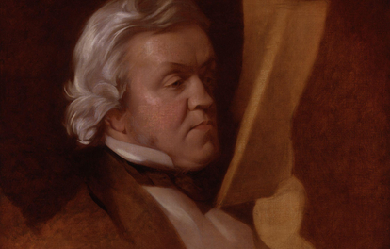
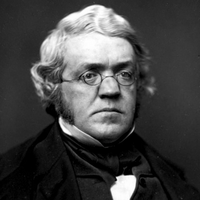
William Makepeace Thackeray (18 July 1811– 24 December 1863) was an English novelist of the 19th century. He is famous for his satirical works, particularly Vanity Fair, a panoramic portrait of English society. He began as a satirist and parodist, writing works that displayed a sneaking fondness for roguish upstarts such as Becky Sharp in Vanity Fair, and the title characters of The Luck of Barry Lyndon and Catherine. In his earliest works, written under such pseudonyms as Charles James Yellowplush, Michael Angelo Titmarsh and George Savage Fitz-Boodle, he tended towards savagery in his attacks on high society, military prowess, the institution of marriage and hypocrisy.



